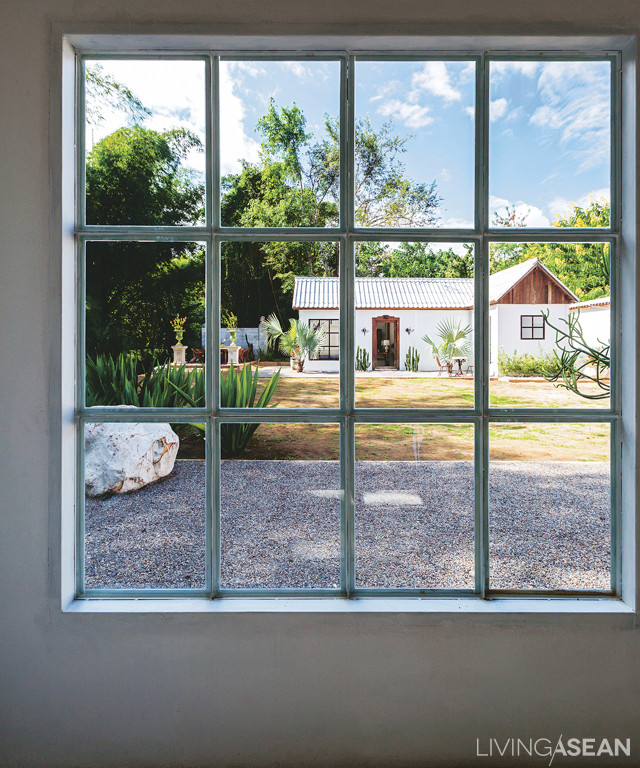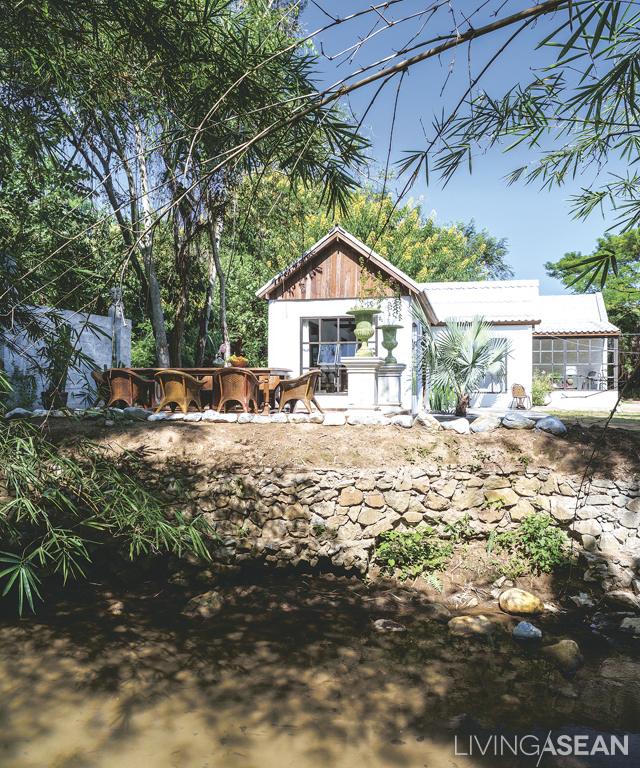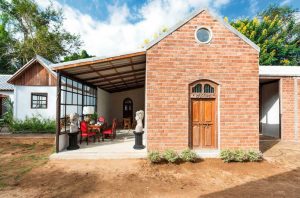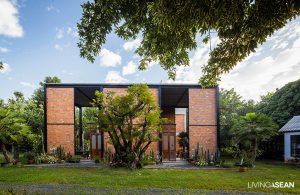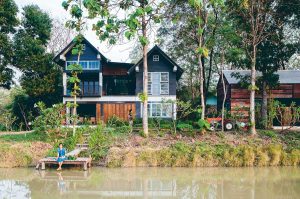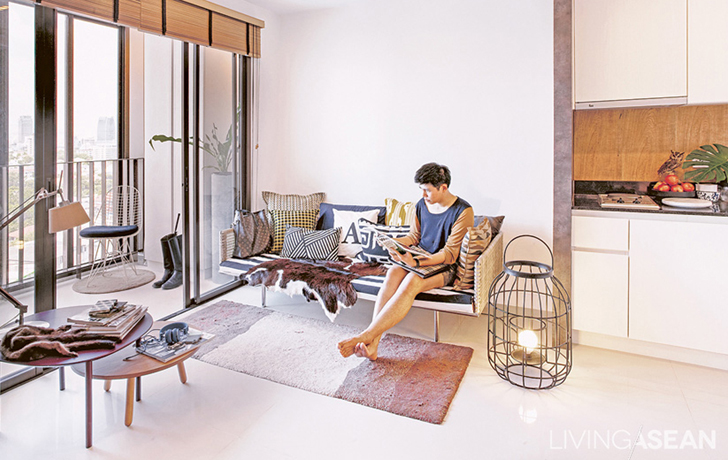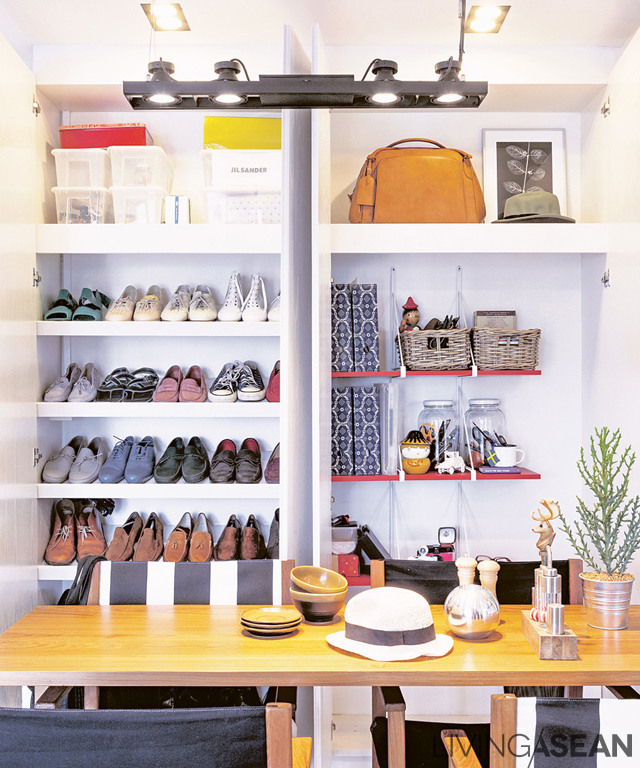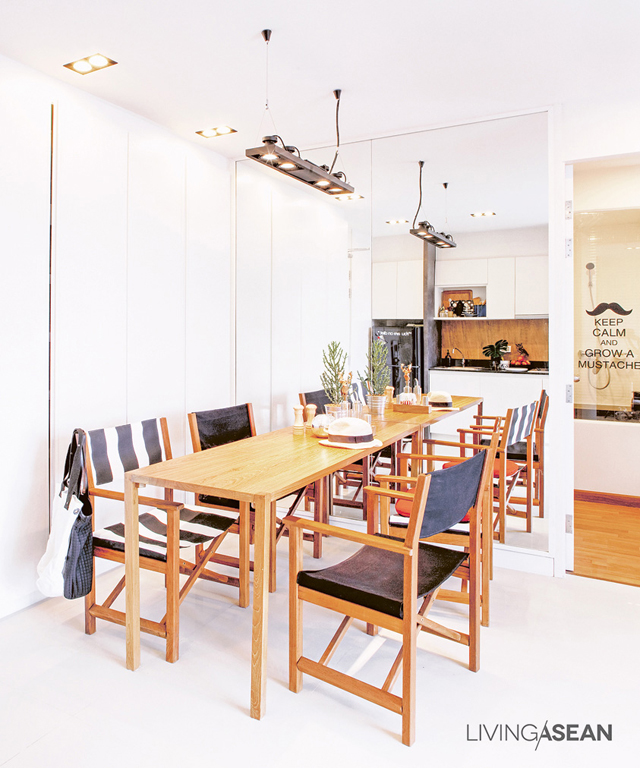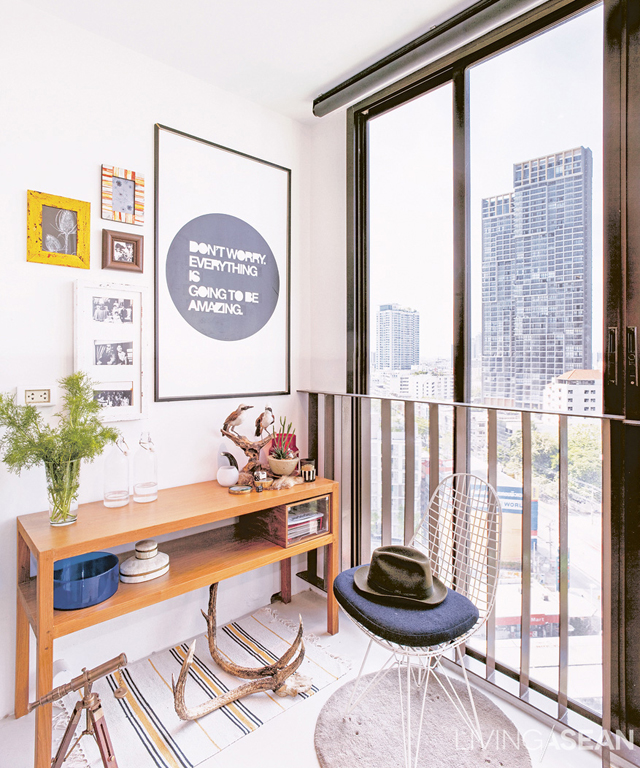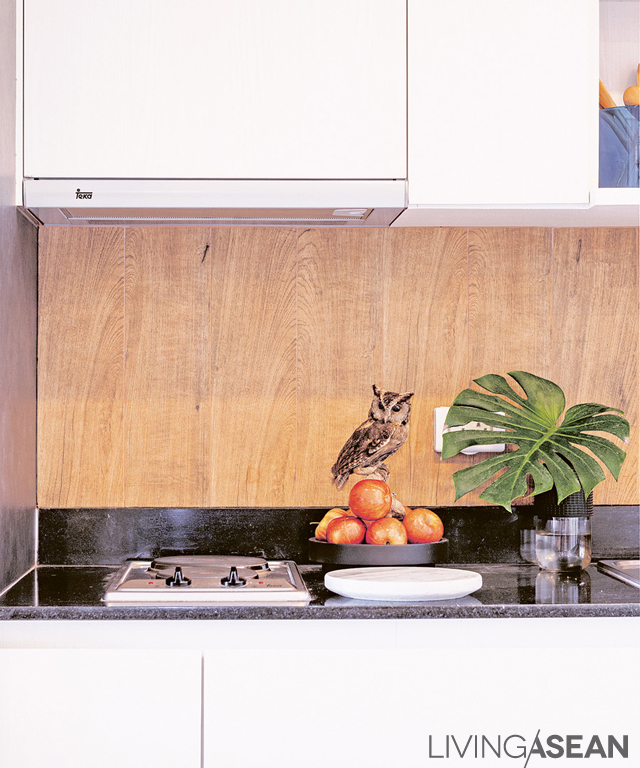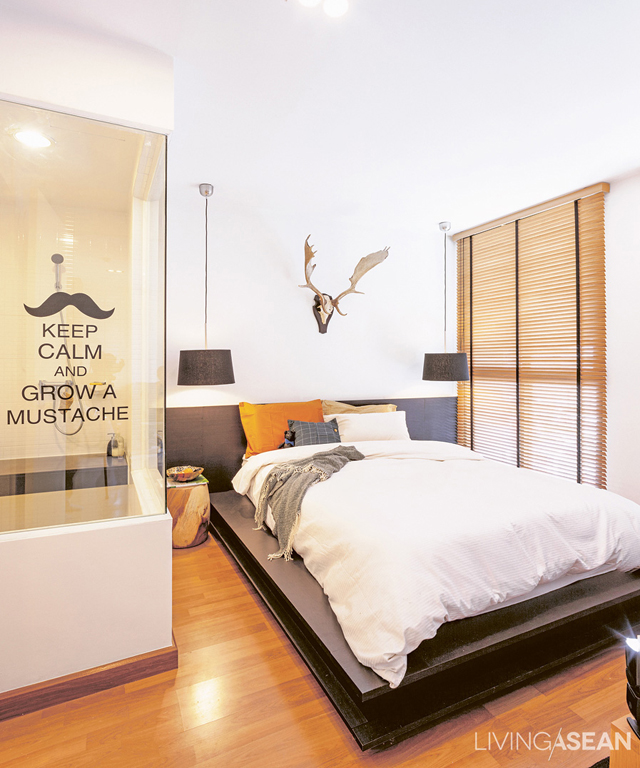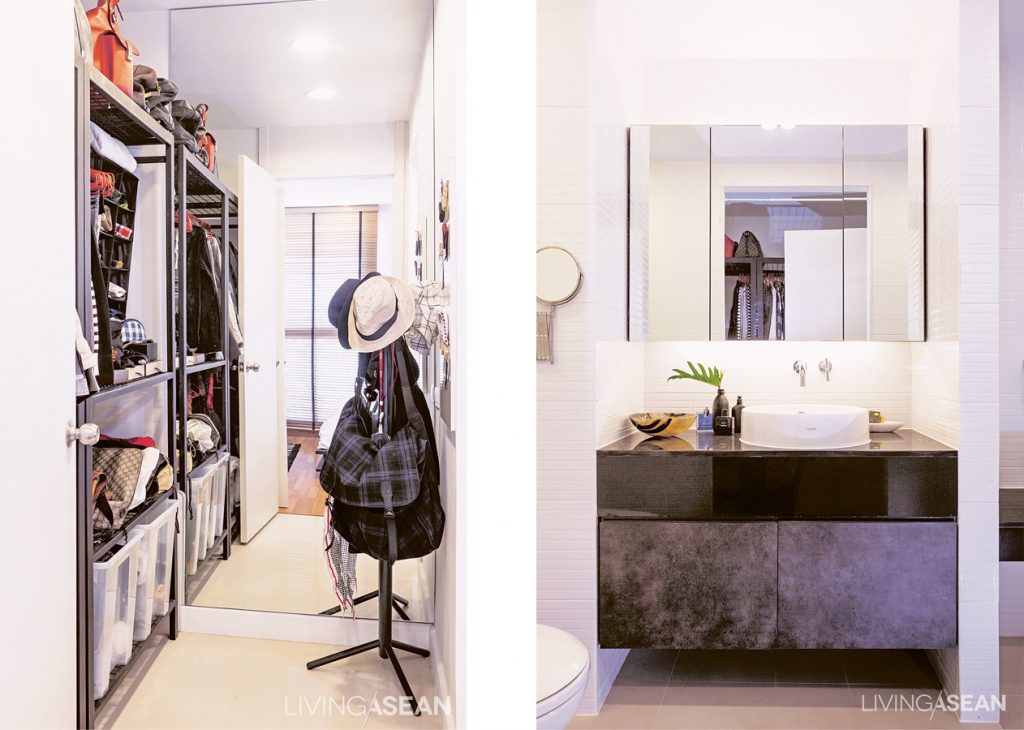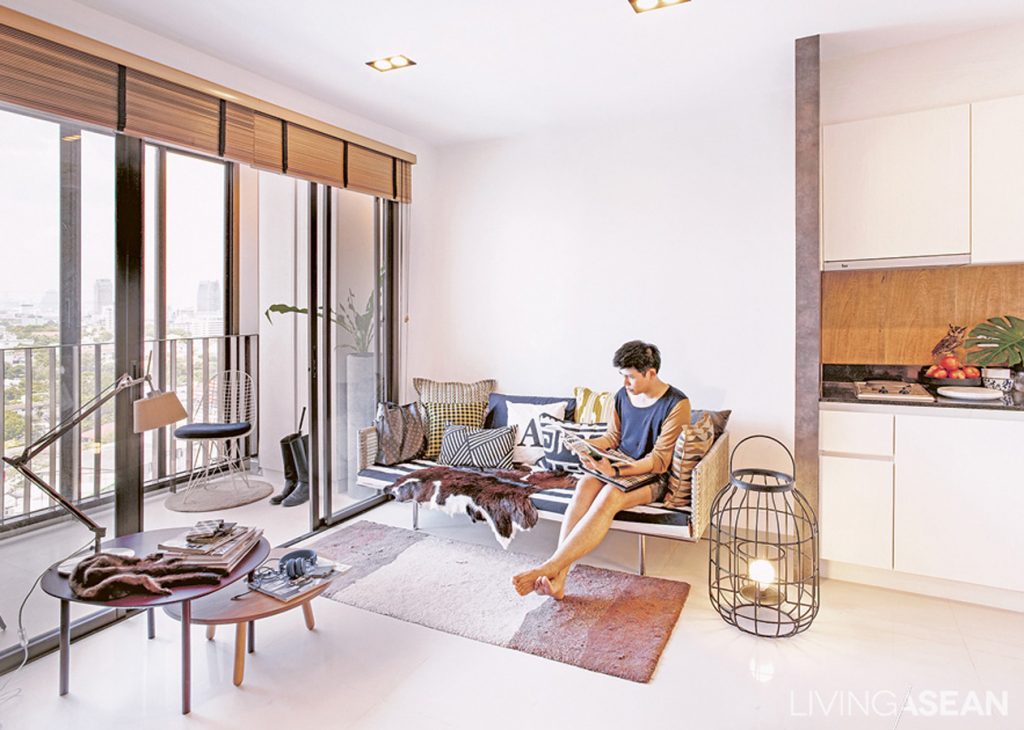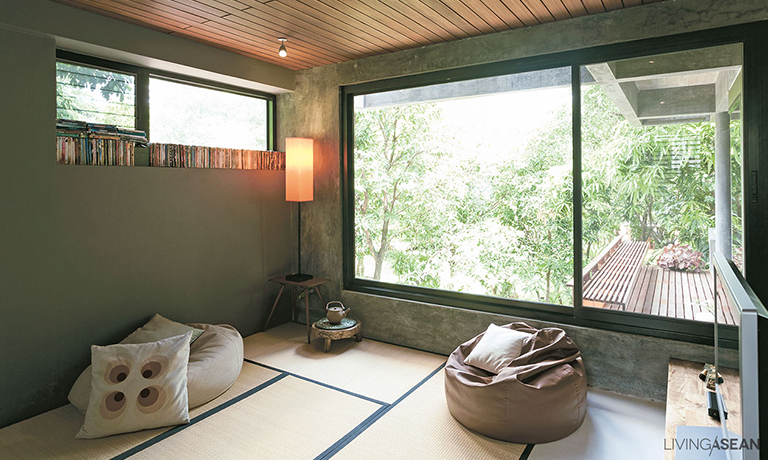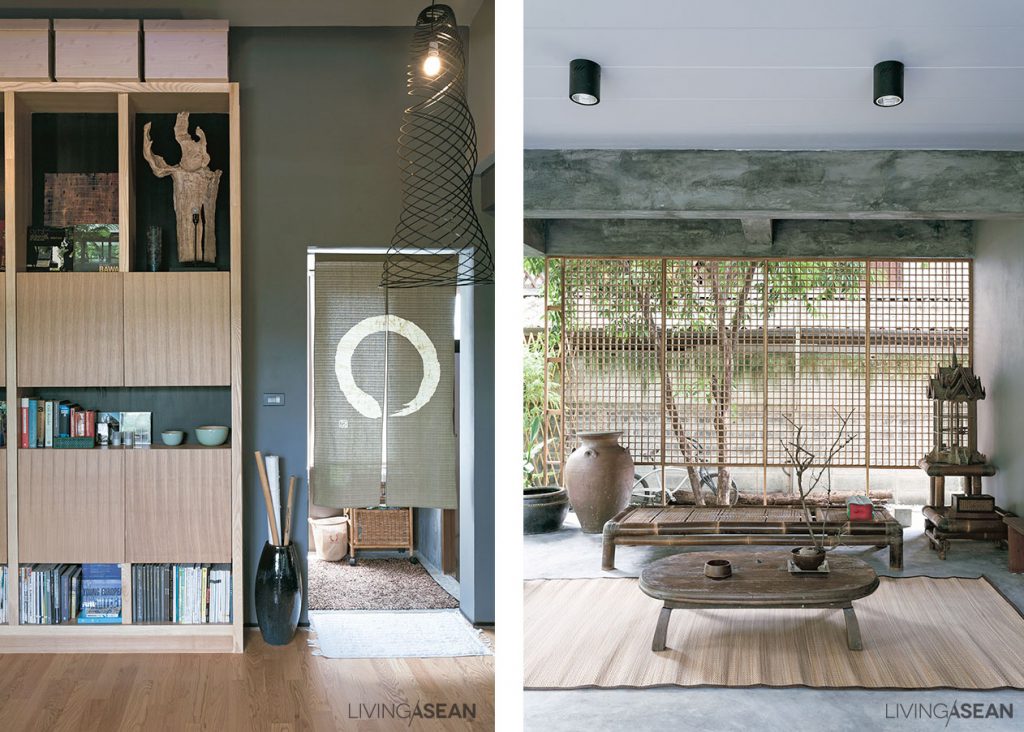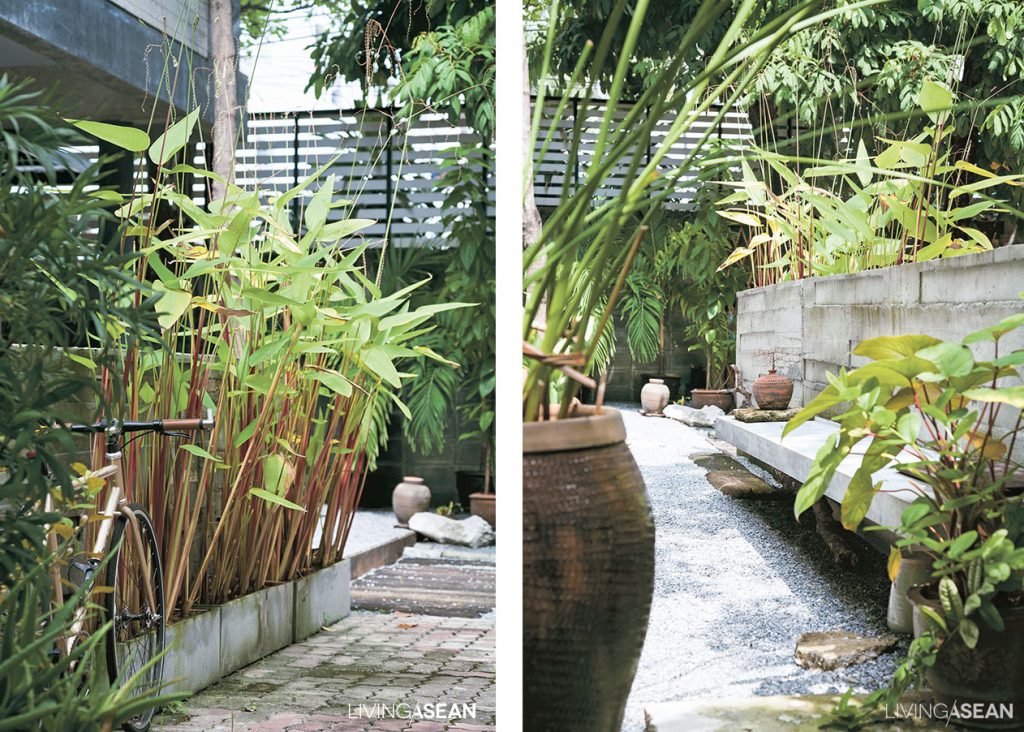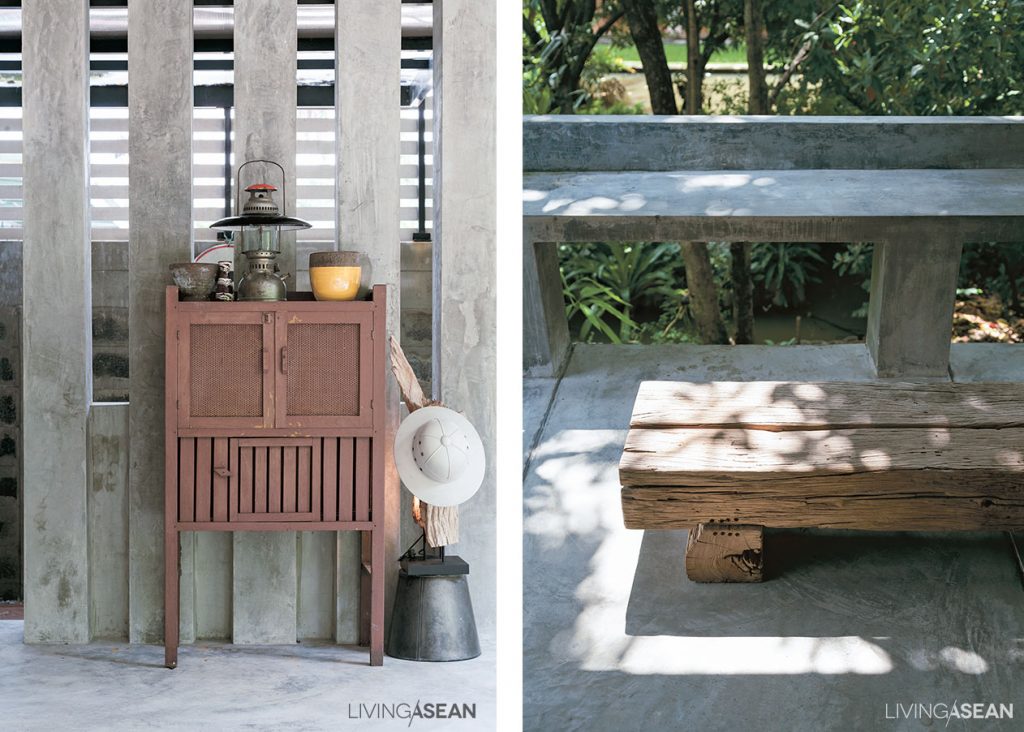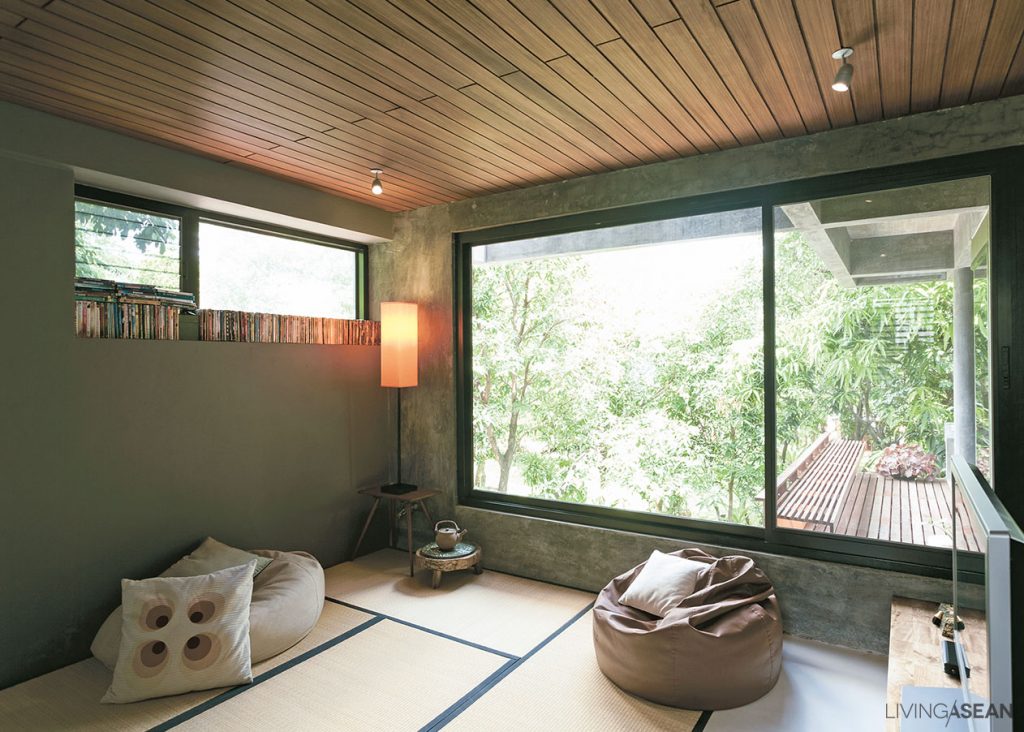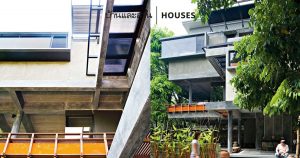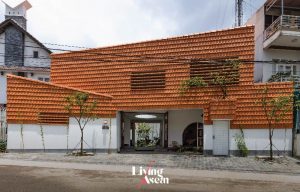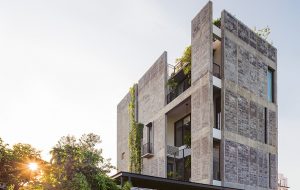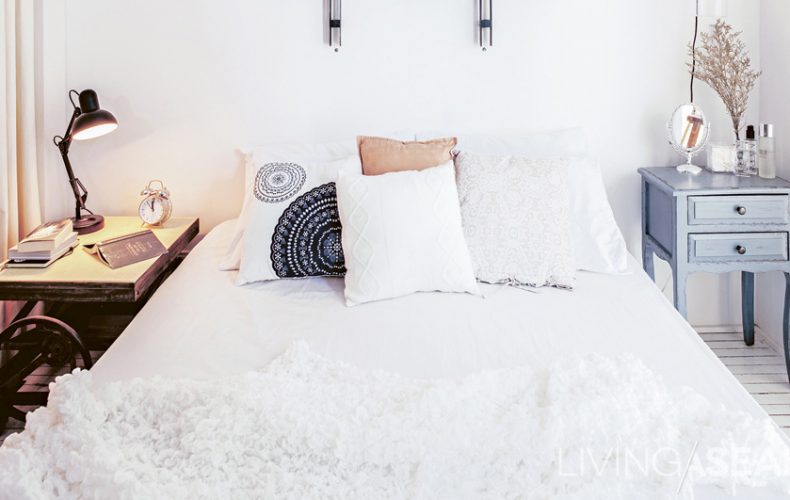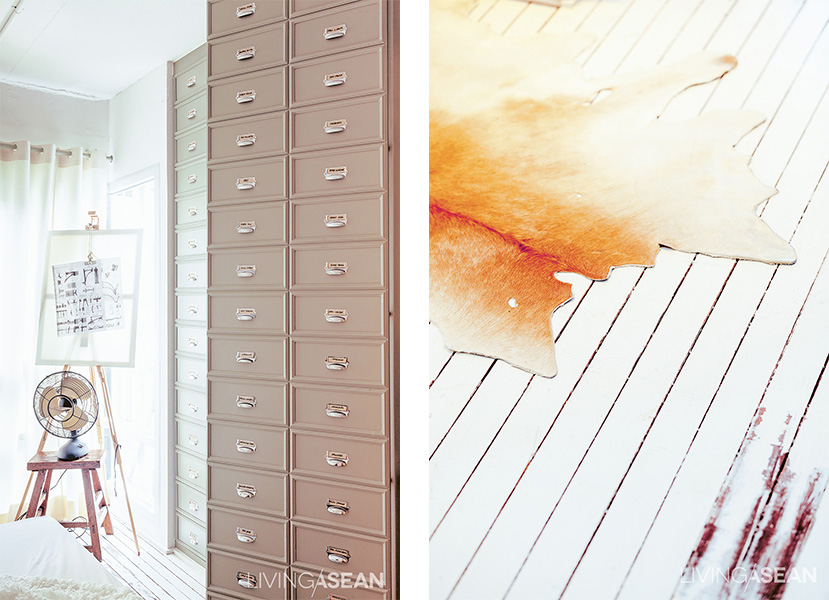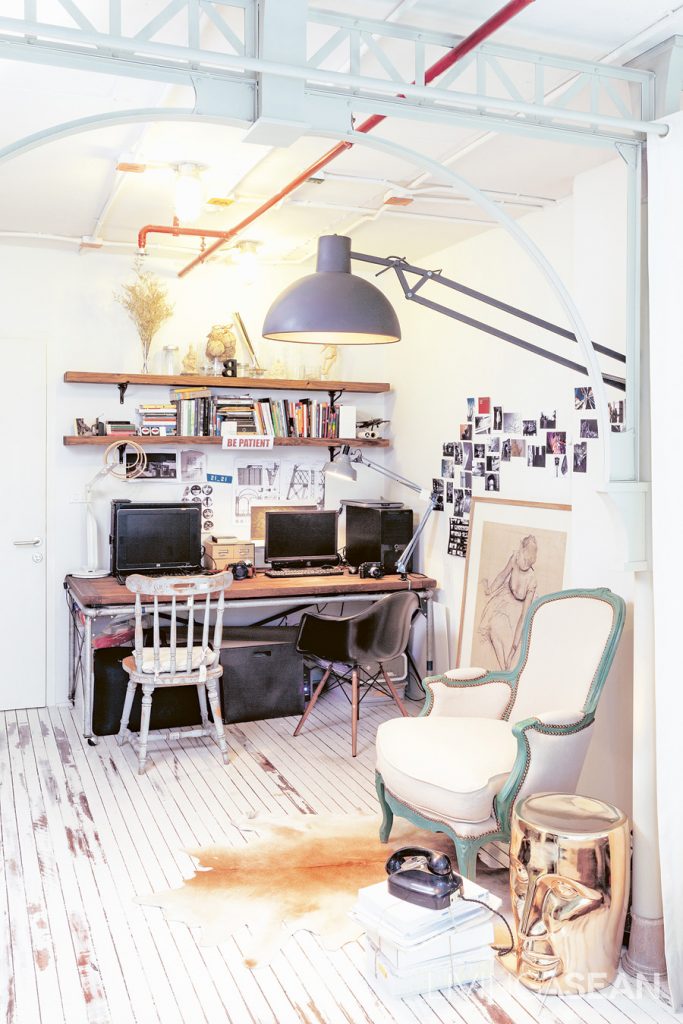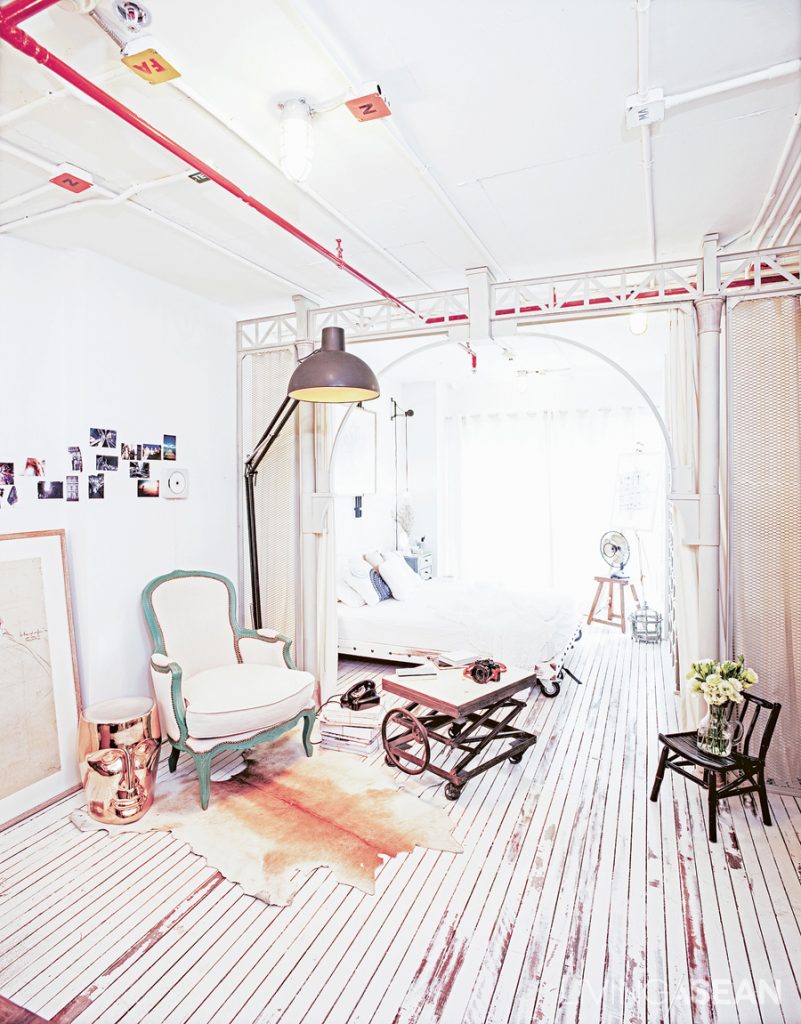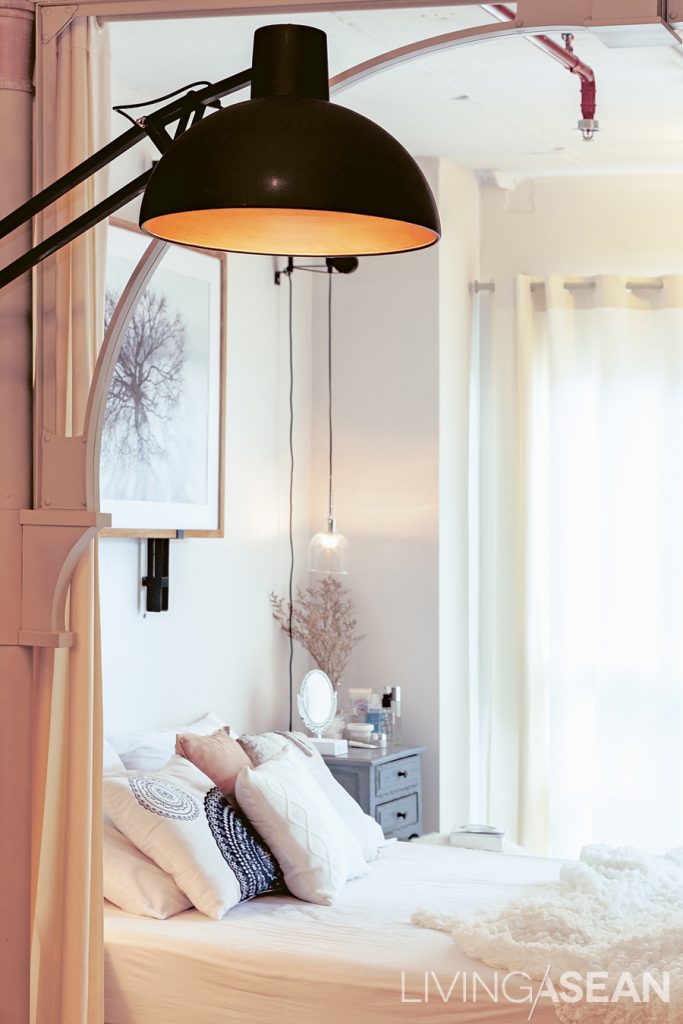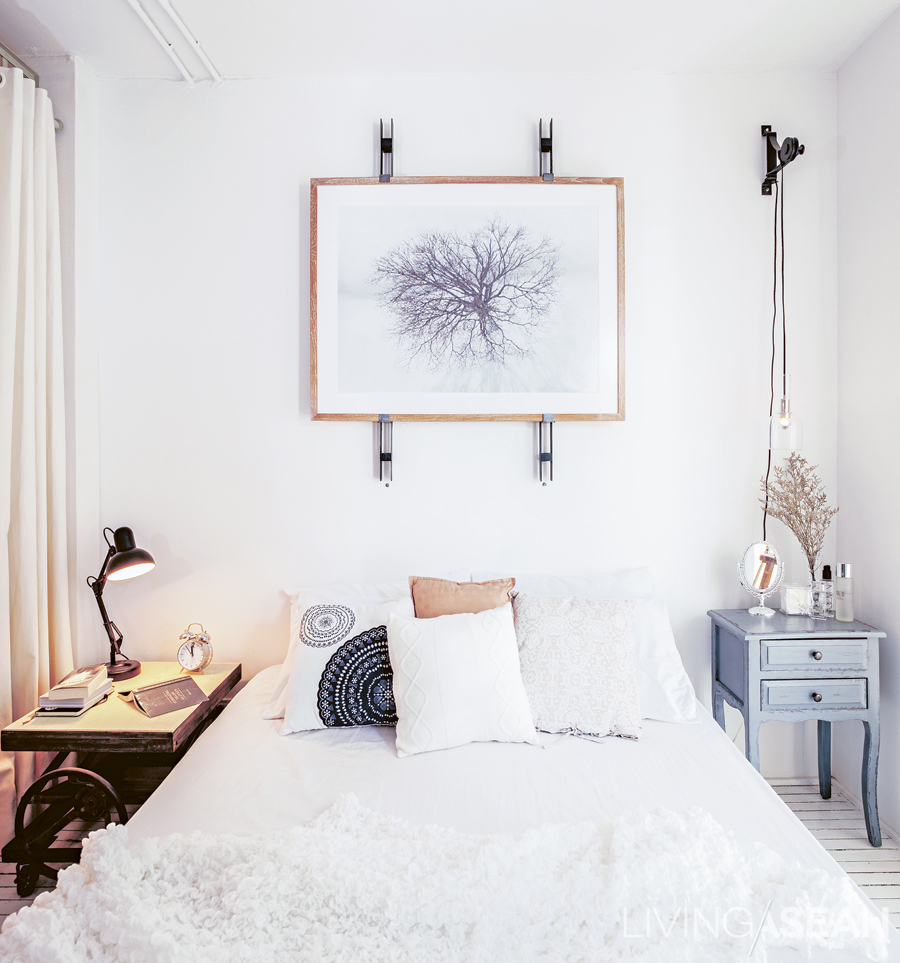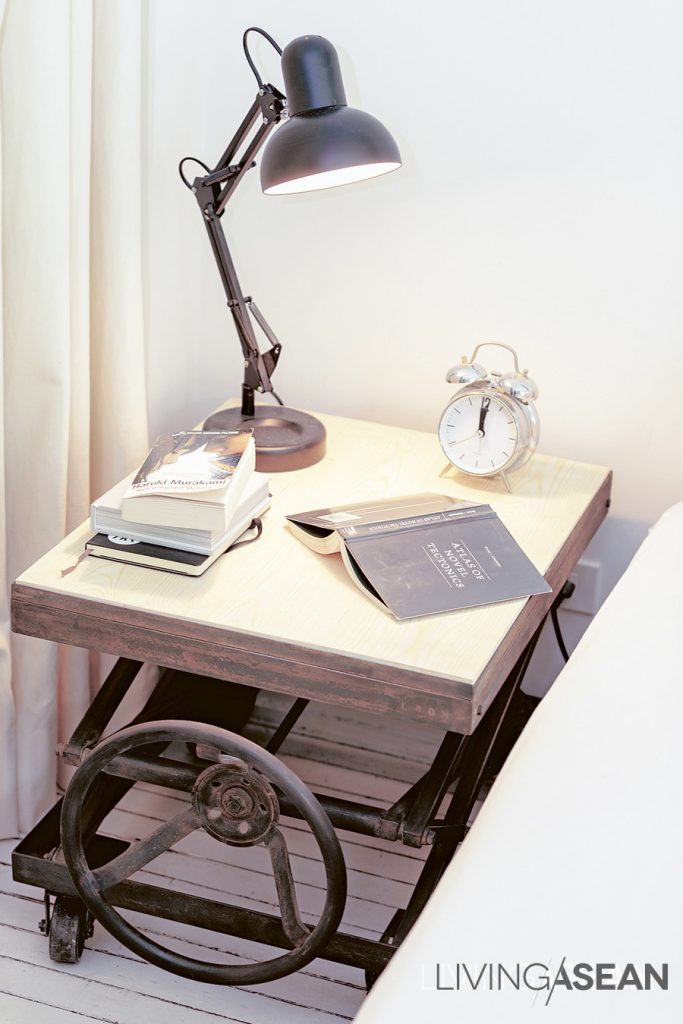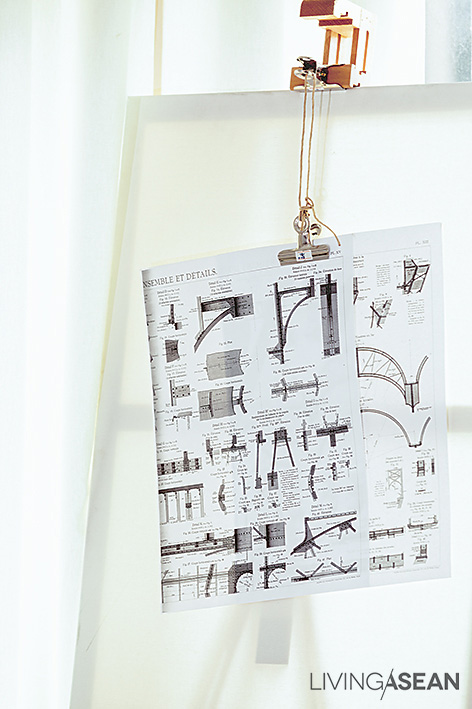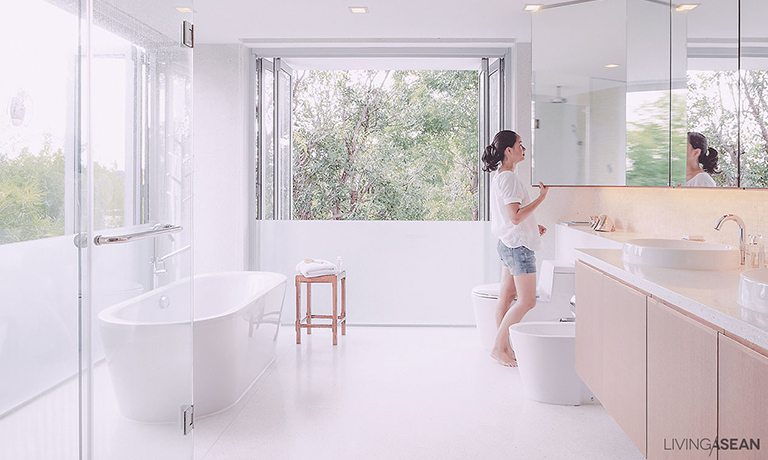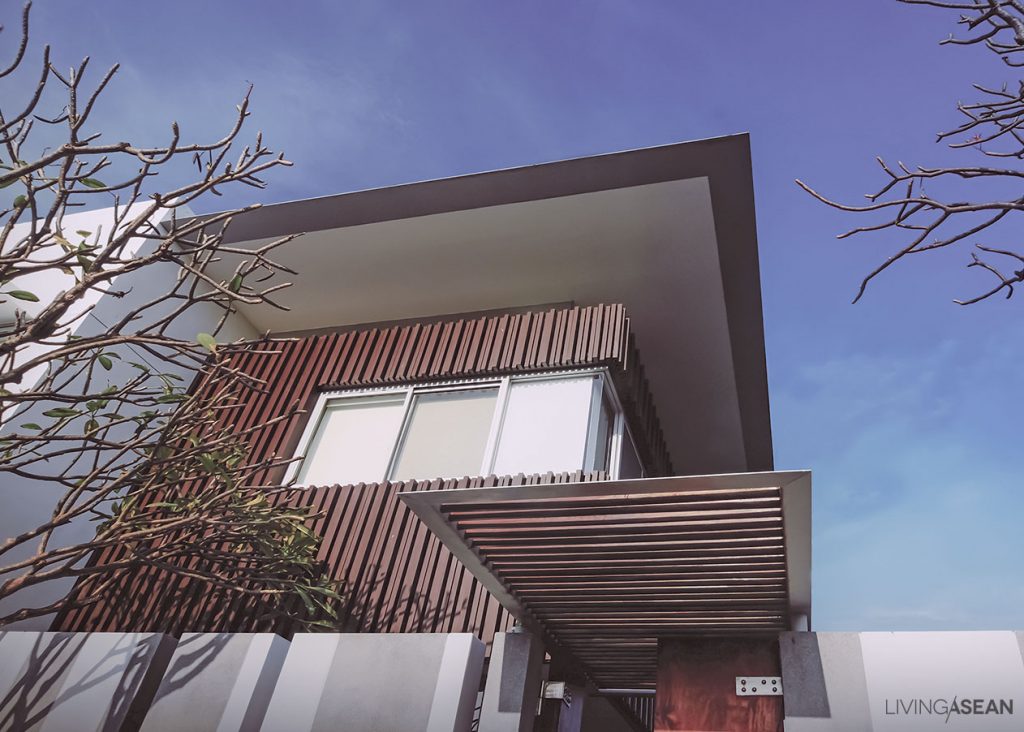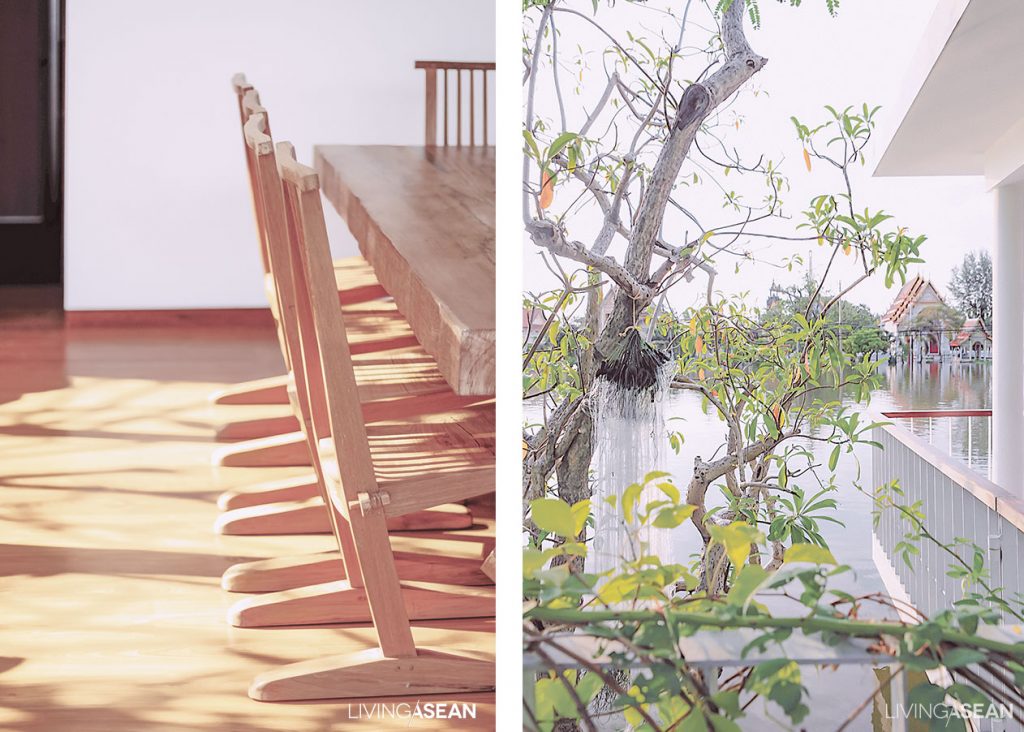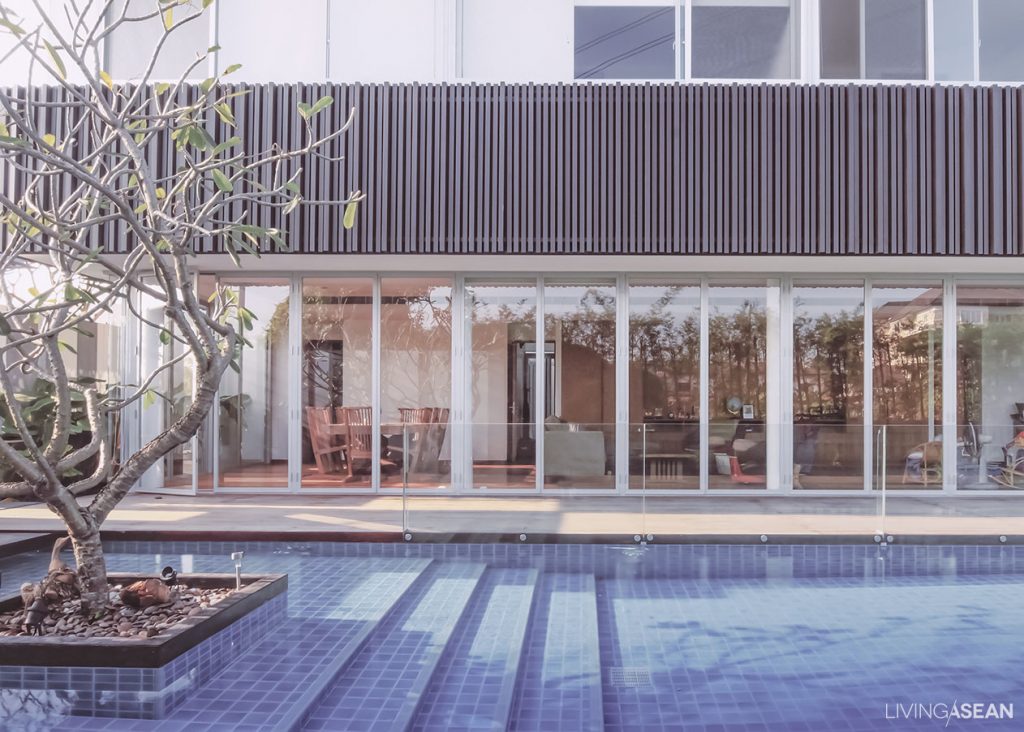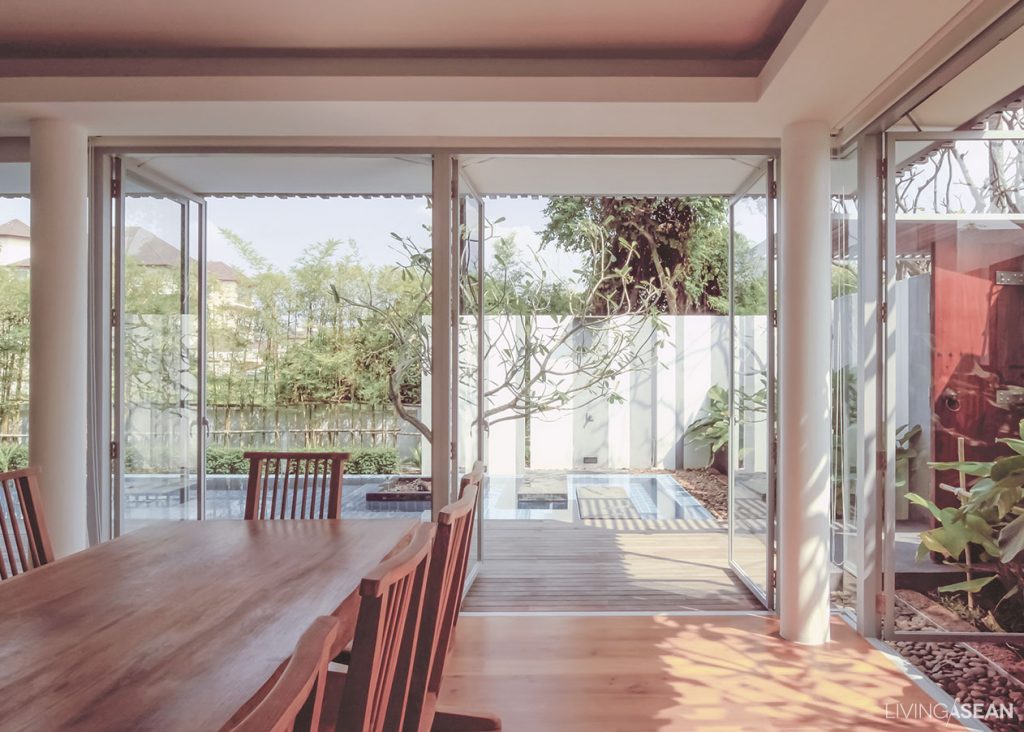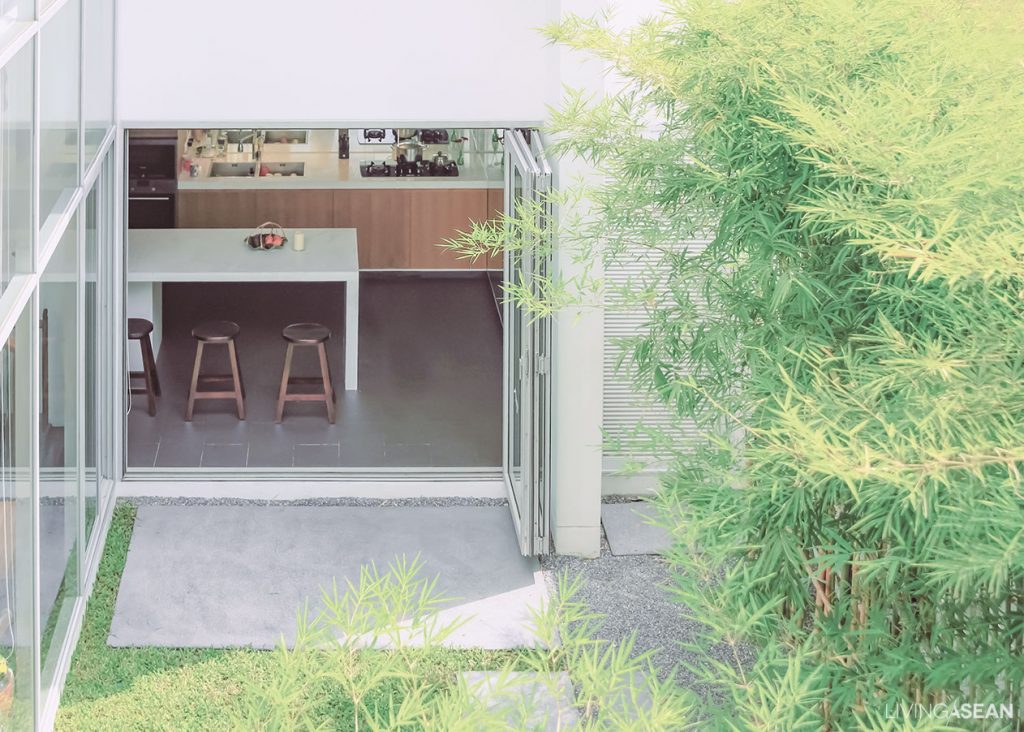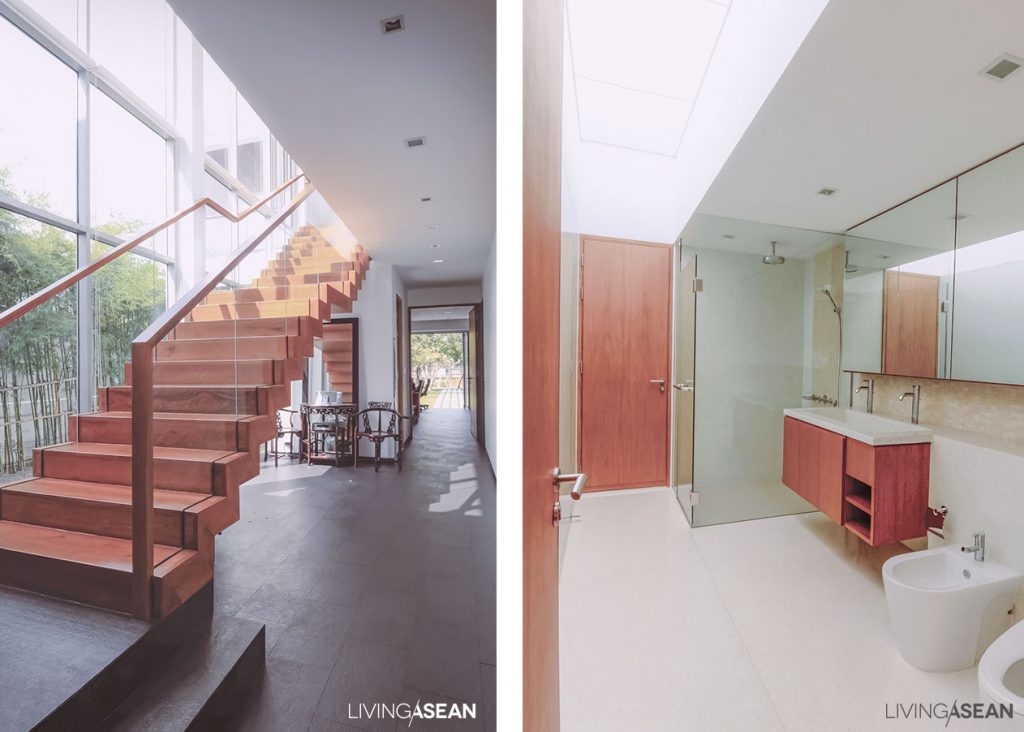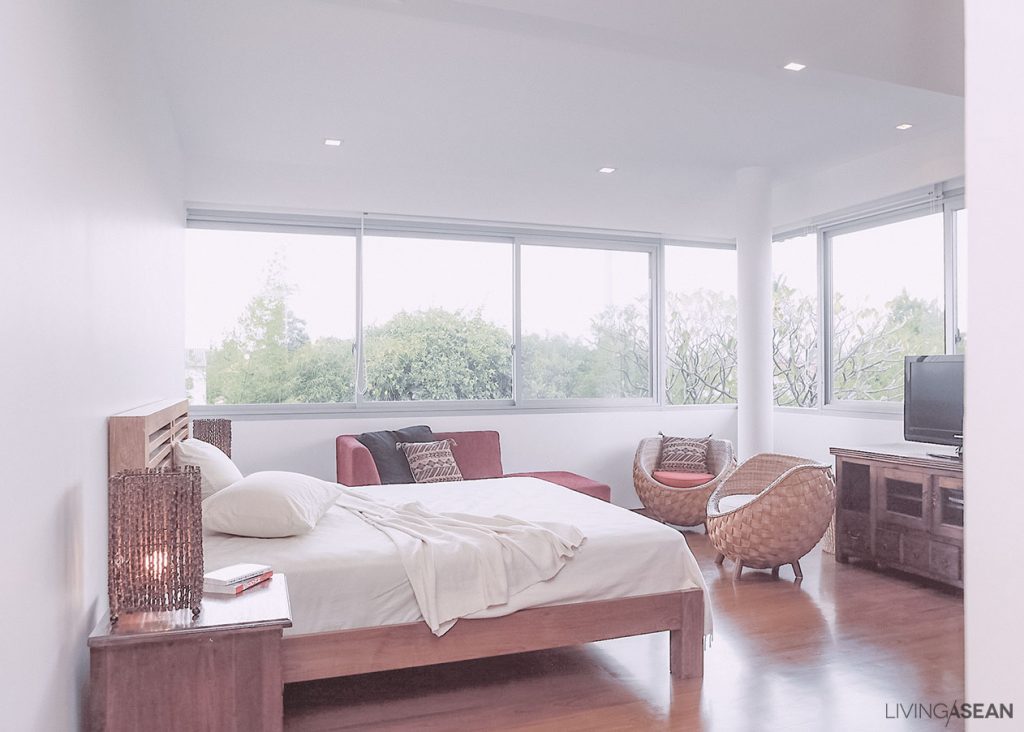/ Bangkok, Thailand /
/ Story: Ekkarat Laksanasamrit / English version: Peter Montalbano /
/ Photographs: Sitthisak Namkham /
A person’s sense of proportion in creating a house to suit his own lifestyle can have energizing results. We recently visited a modern steel framed home in Bangkok’s Viphavadi Rangsit area that illustrated this. Nutt Chenyawanit, owner of Tin Home Toy merchandise, designed this house as a reflection of his identity.

From details of home décor, such as galvanized iron and stylish plant containers, to the overall house design, we saw a modern steel framed home that retained the flavor of Tropical architecture.
Open and relaxed in a traditional house style reduced to essentials, with a high pitched gable roof, extended eaves and awnings for sun and rain protection, this house with a modern appeal looks the epitome of good design, one that holds the secret to what makes people happy in life. An it looks fun to live in, too.
We asked the homeowner for his thoughts on design. He explained: “We like high ceilings; low ones feel cramped. The living room and stairwell area reaches up a full two stories, and elsewhere on the ground floor ceilings are generally three meters or higher. On the second floor, ceilings follow the roof slope, for the most part.”
The exception is the master bedroom, which has a standard ceiling height. “Bedrooms with high ceilings feel too buoyant,” he said.


The Tin Home Toy office building next door, built in a similar style, was here before the house and now is separated from it by a swimming pool. Nutt favors architecture with steel-based frames that give it a raw cool modern style.
The metal post-and-beam design for floor and roof here made for rapid construction and quick cleanup. It presents a stylish façade of show brick walls and glass panels.


Extended eaves, large doors and windows provide good ventilation and make the house comfortable for living. Metal frameworks minimize the need of support posts for the extended eaves, freeing more space for parking. High ceilings allow warm air to rise and exit through upstairs windows.

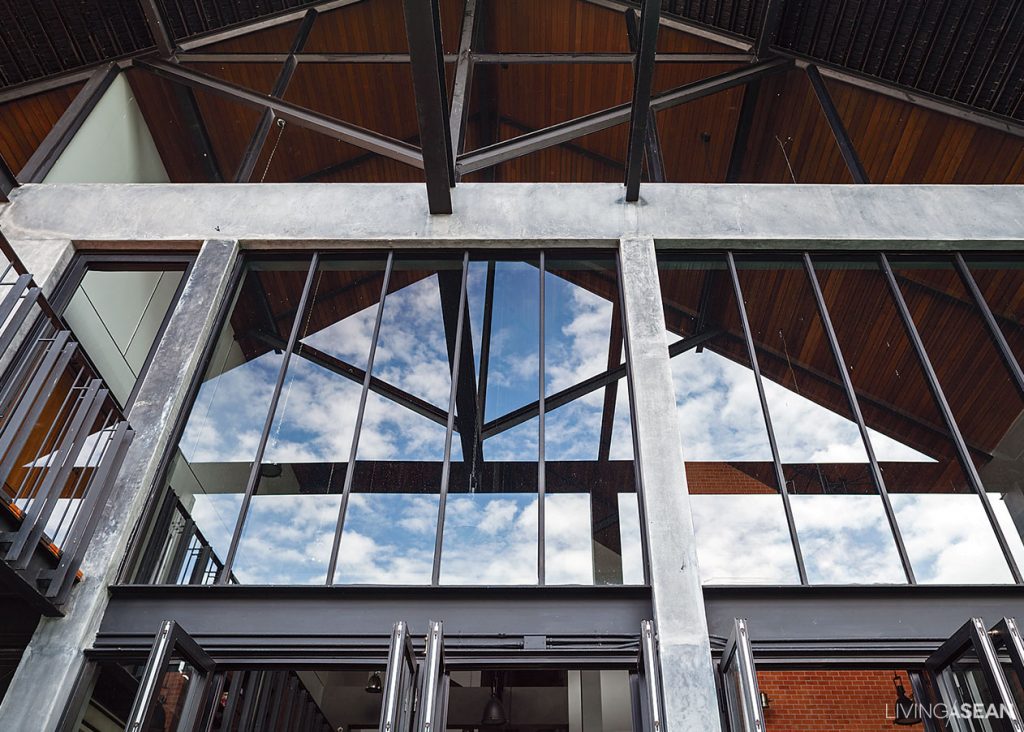
Usable space on the ground floor holds the living room, stairwell, dining room, kitchen, and service areas like a storeroom and laundry. Upstairs consists of bedrooms and a workroom. Hallways are at least 2.5 meters wide for a spacious feel.
Walking around, a visitor has the sense that each space is made for specific purpose, some for children, some for moving around in comfort, some for convenience.
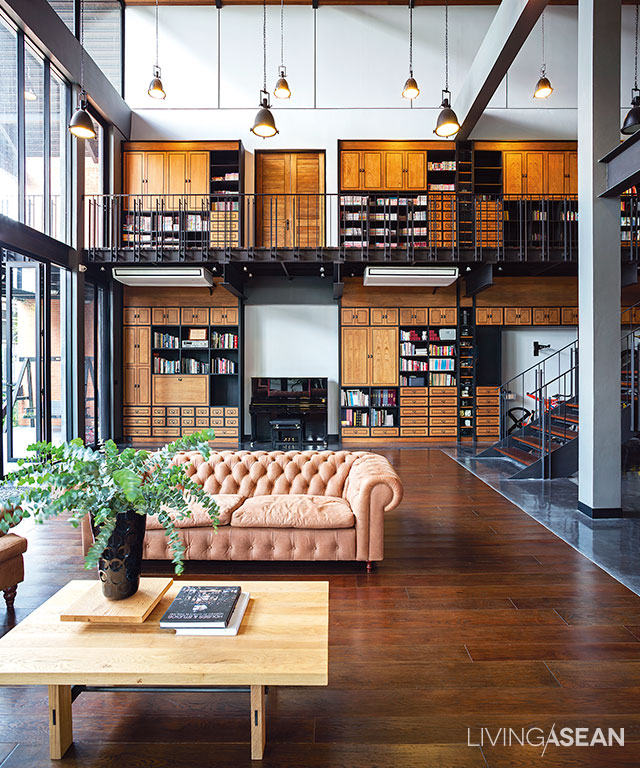
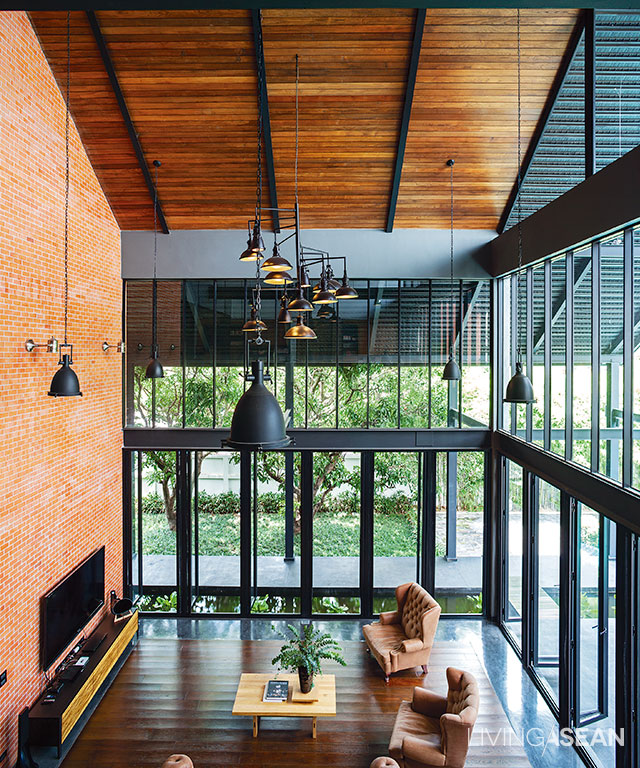
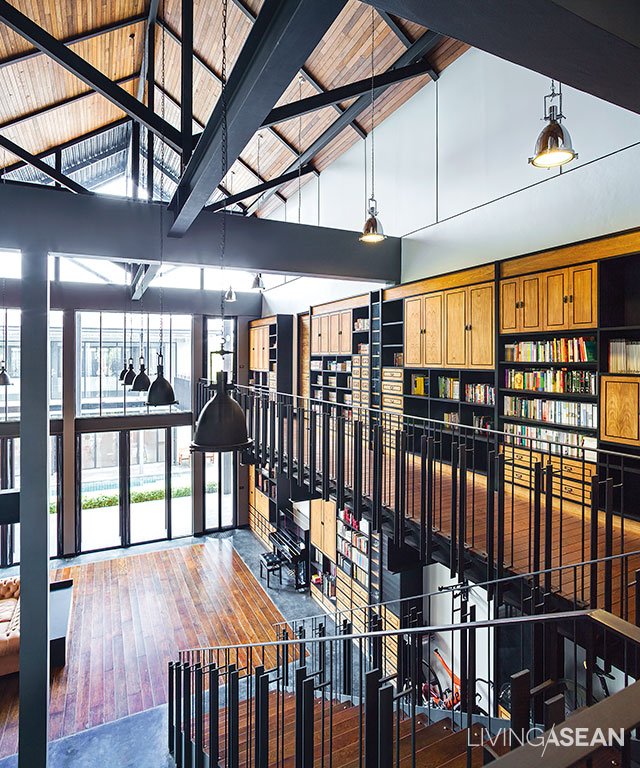
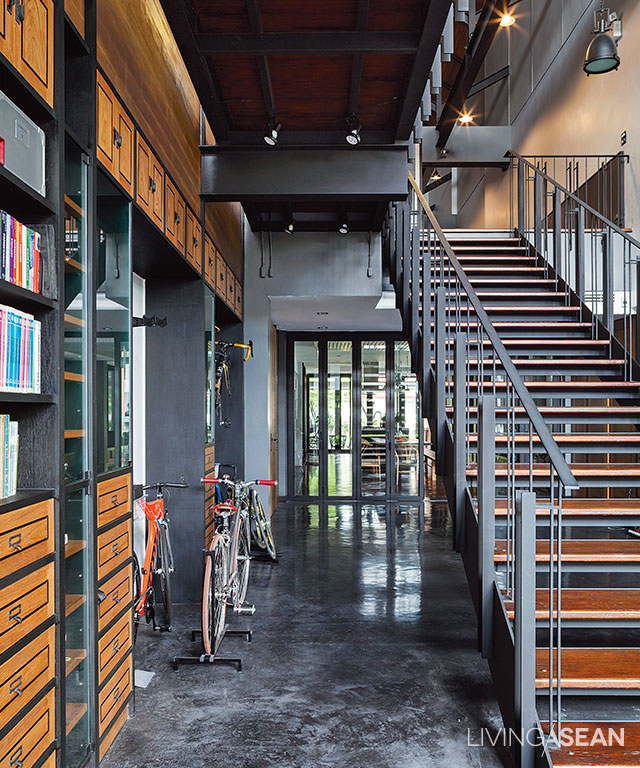
A closer look at the details reveals a “set aside” concept that reflects the way good judgements are made. In this particular case, it shows in design innovations such as high ceilings that bring the sort of happiness and contentment we find in this modern steel framed home.
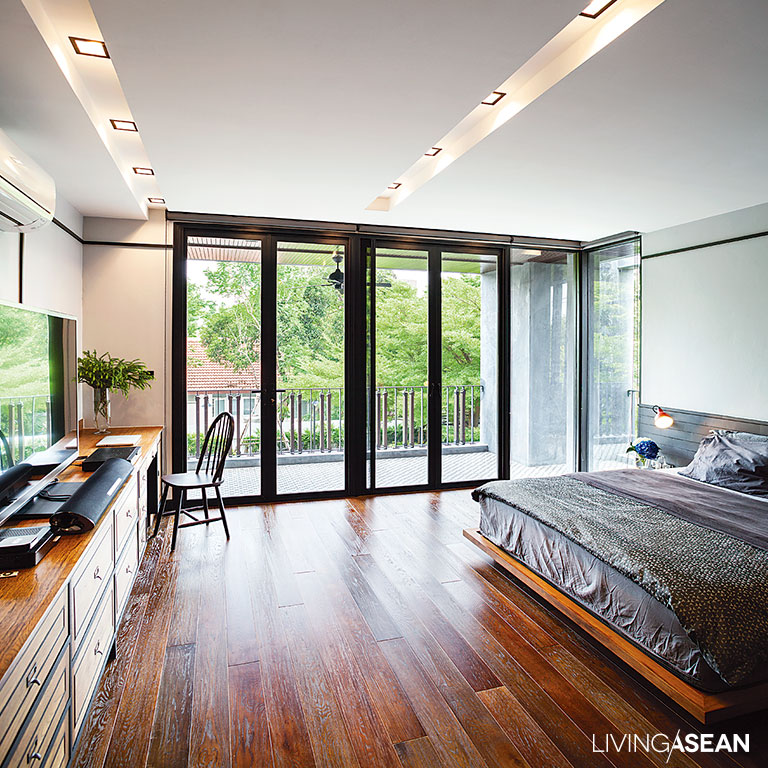
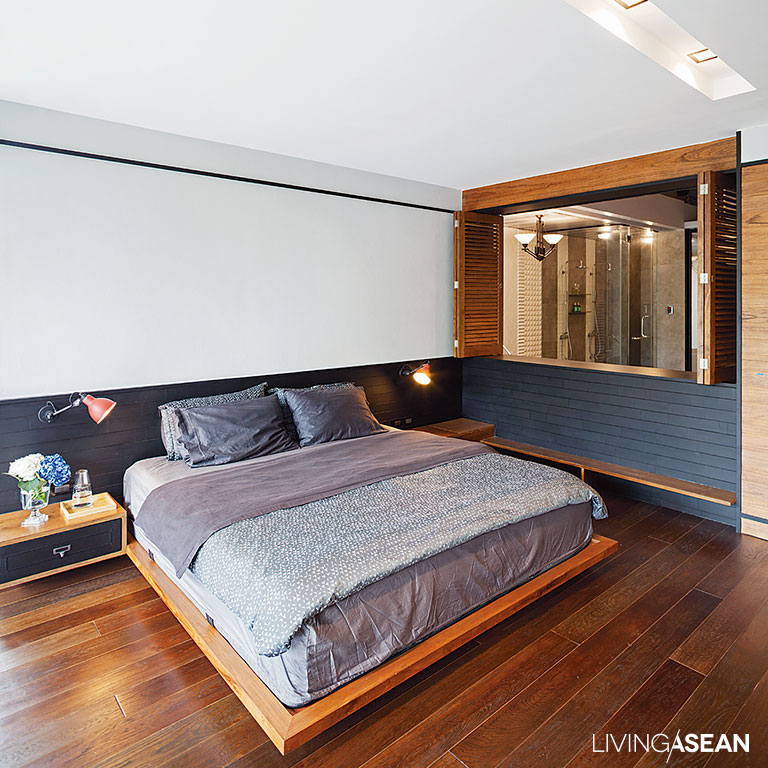

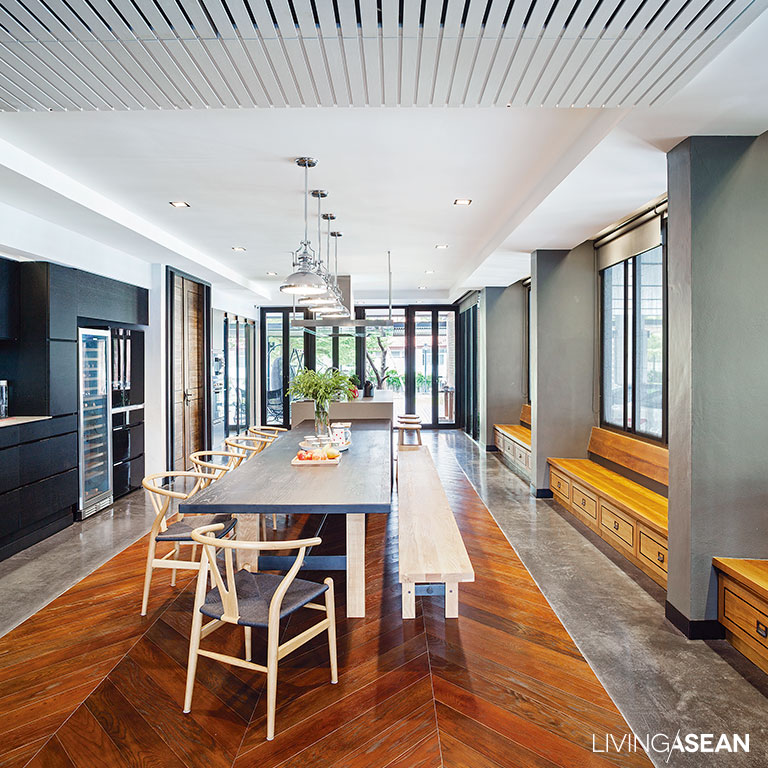
Architect: Nutt Chenyawanit and Jirayut Chaiyajamrunphon
Visit the original Thai article…
 องค์ประกอบอย่างลงตัวในแบบ บ้านสไตล์ดิบเท่
องค์ประกอบอย่างลงตัวในแบบ บ้านสไตล์ดิบเท่
You may also like…
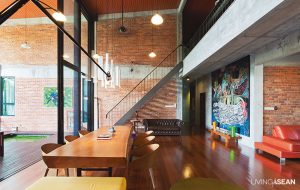 S11 House: An Impressive Energy Saving House in Kuala Lumpur
S11 House: An Impressive Energy Saving House in Kuala Lumpur

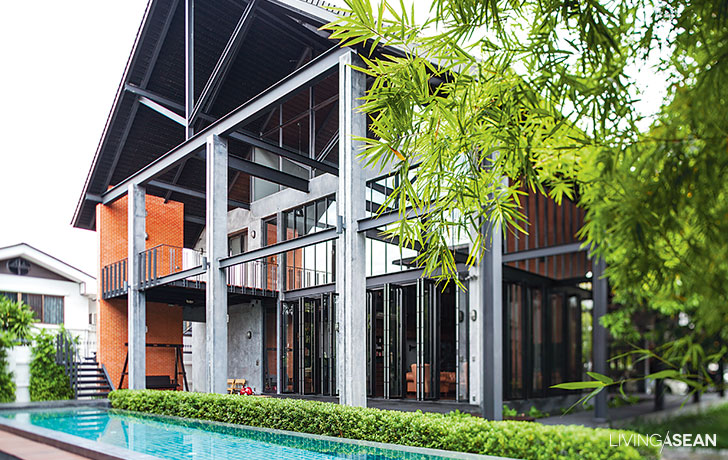

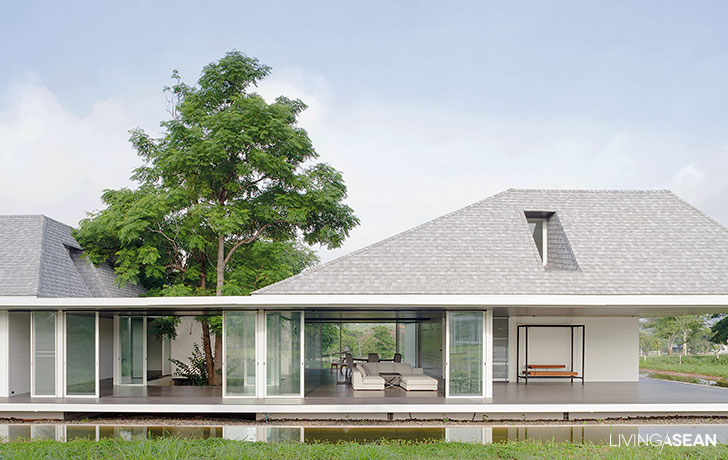
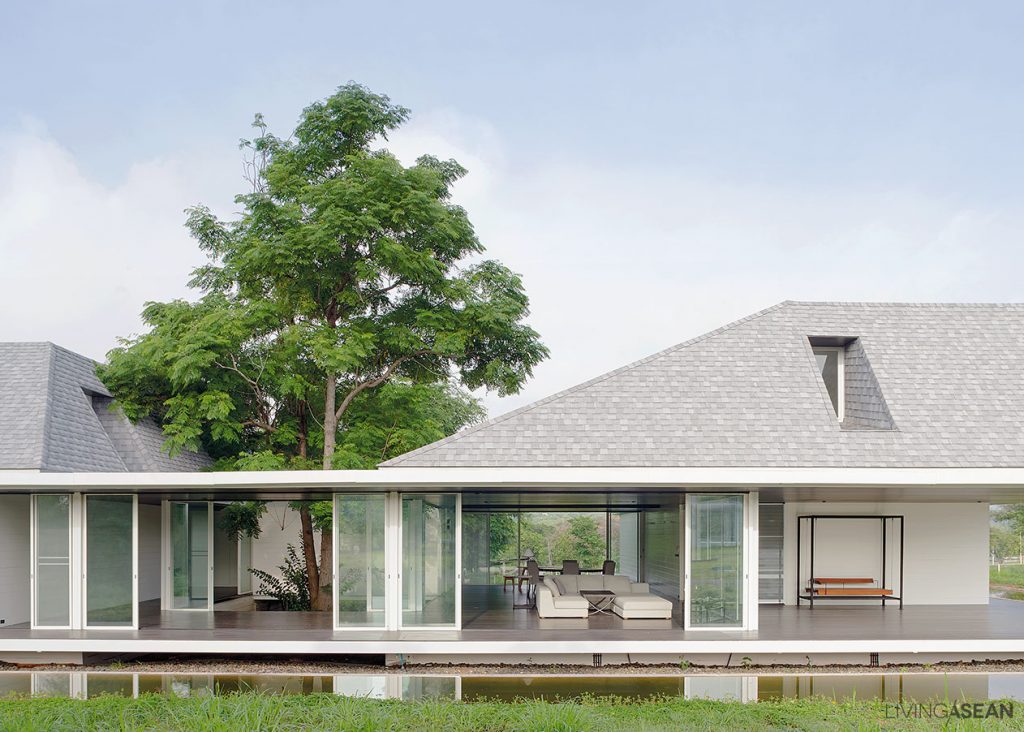

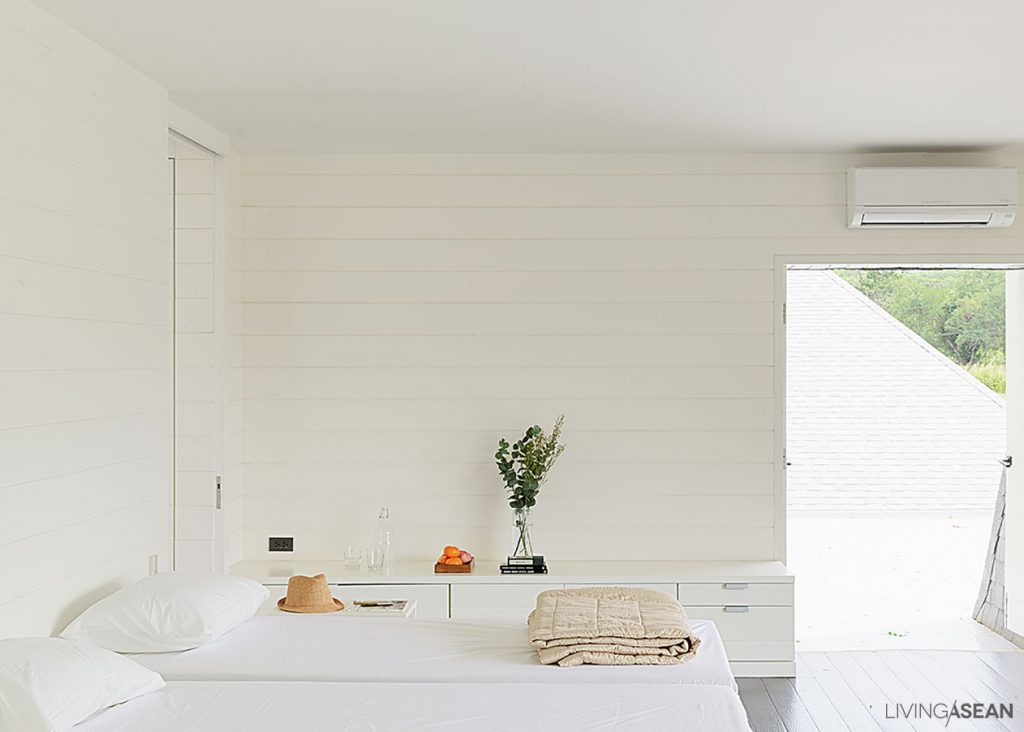

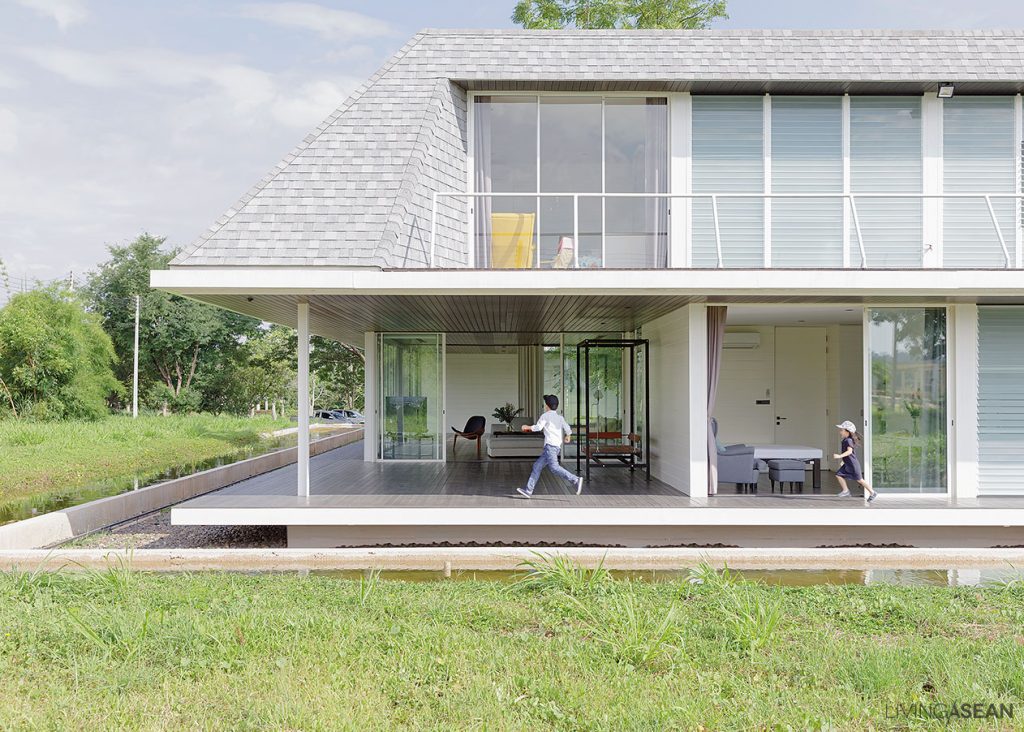
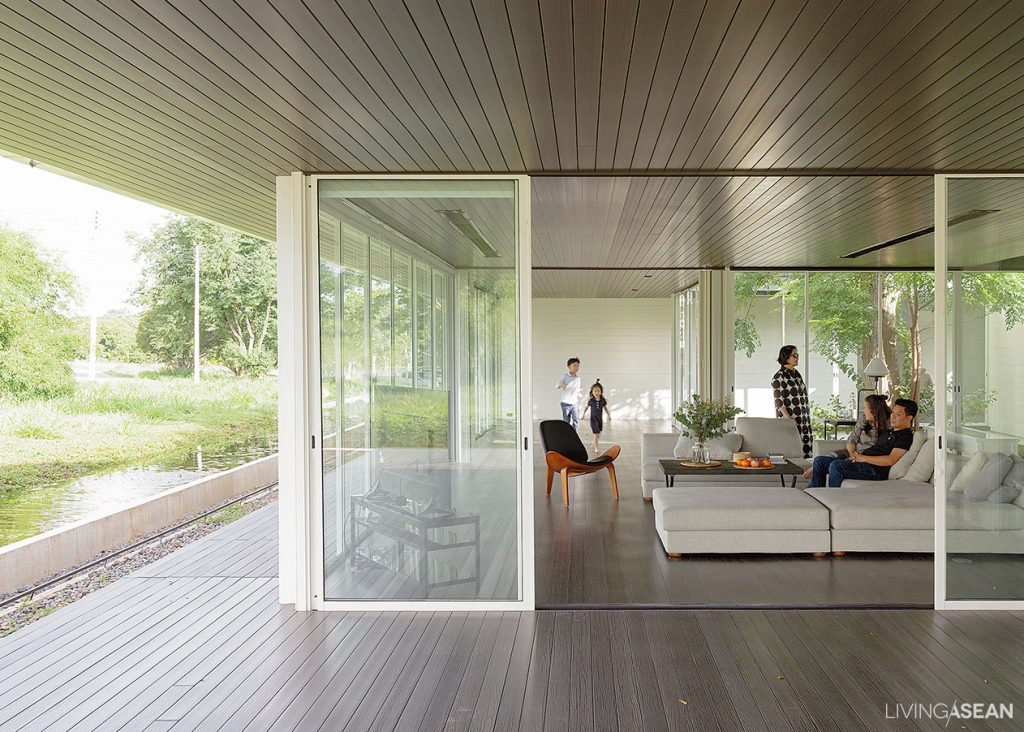

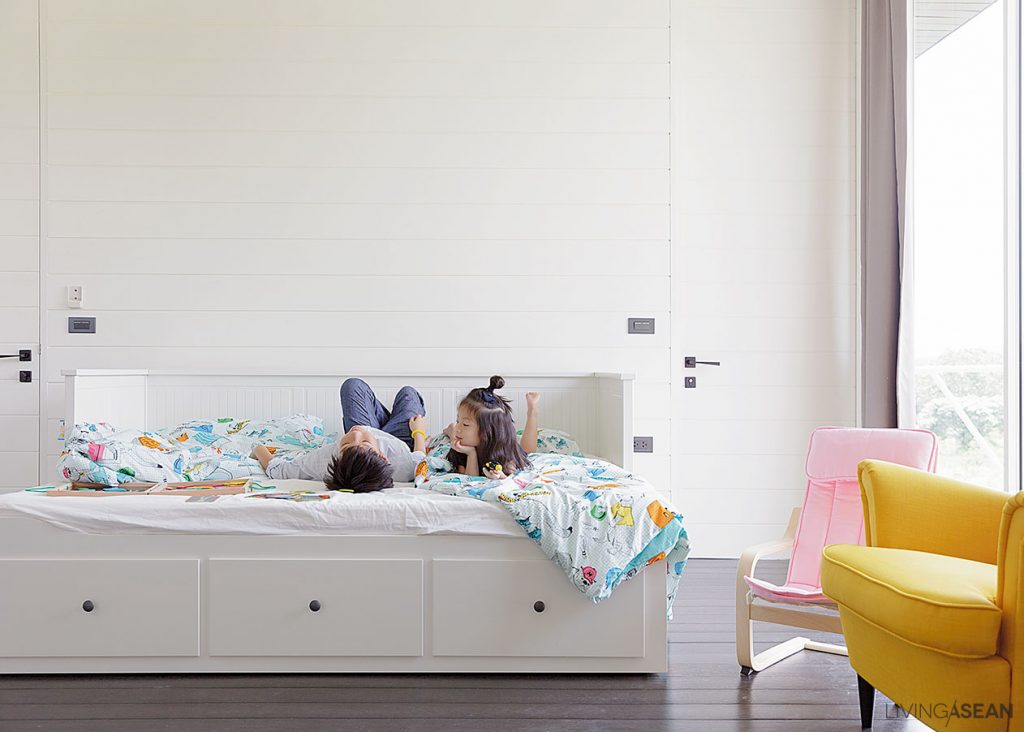

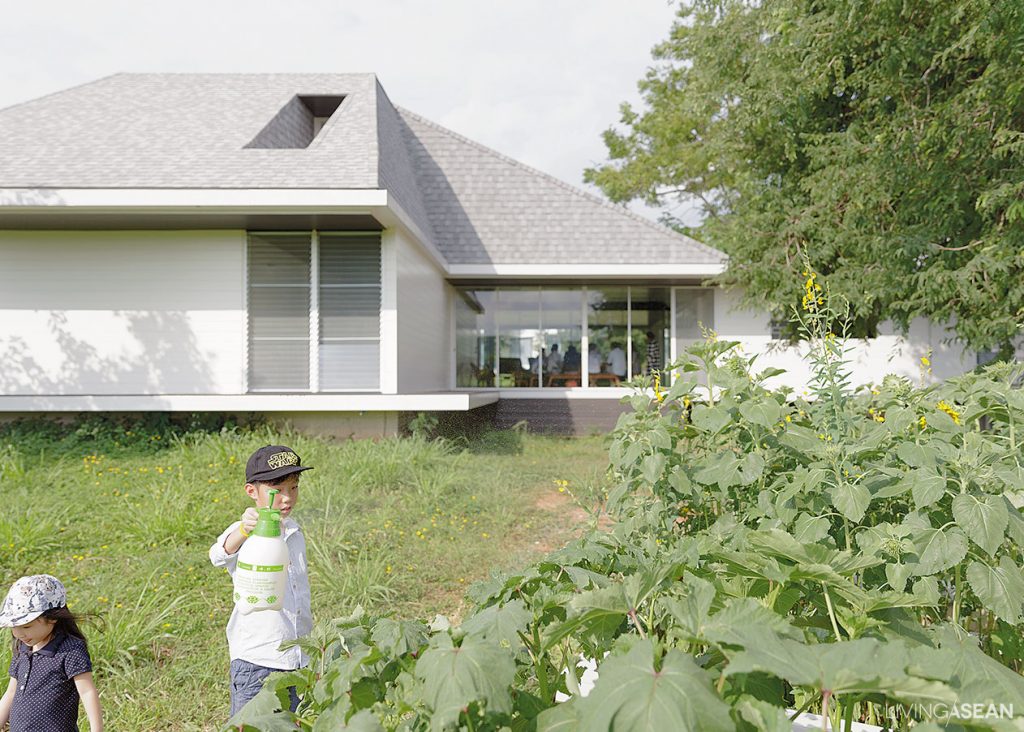
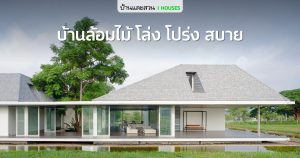
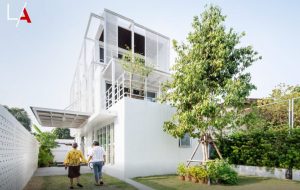
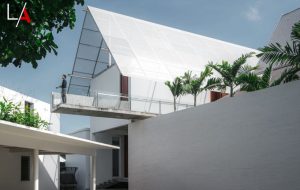
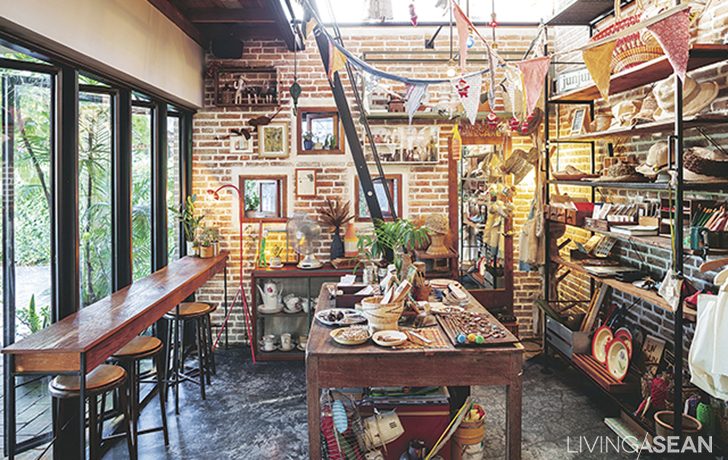
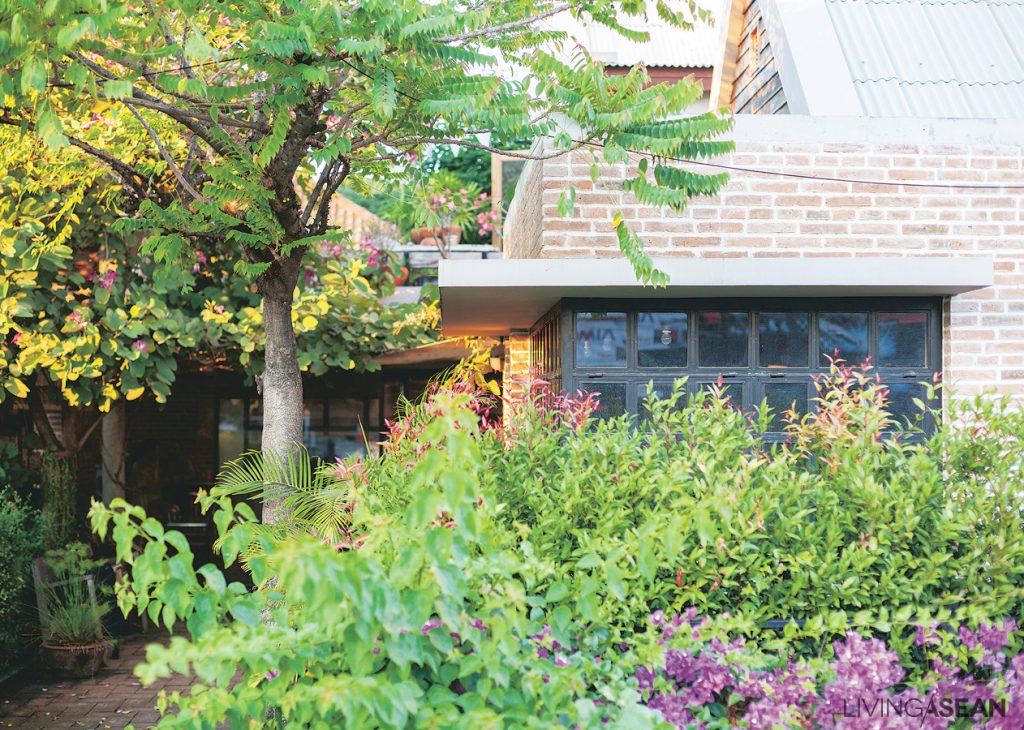
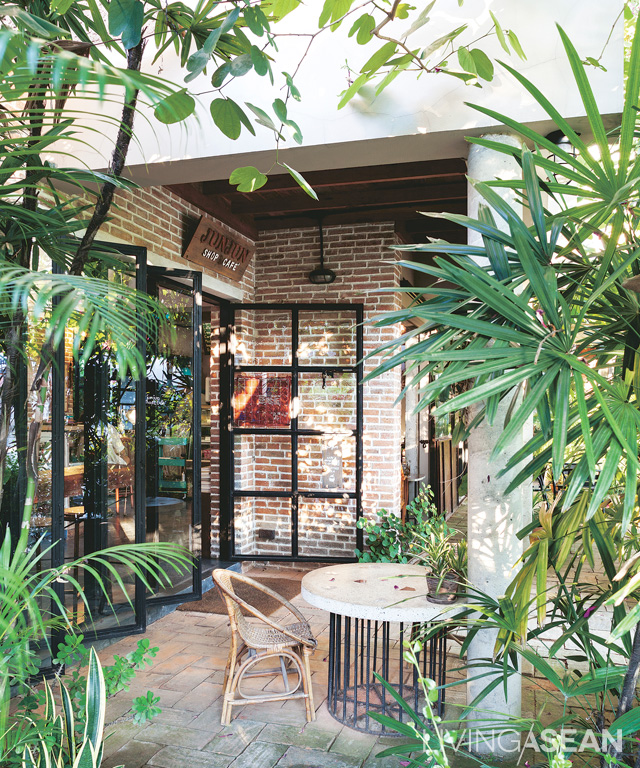
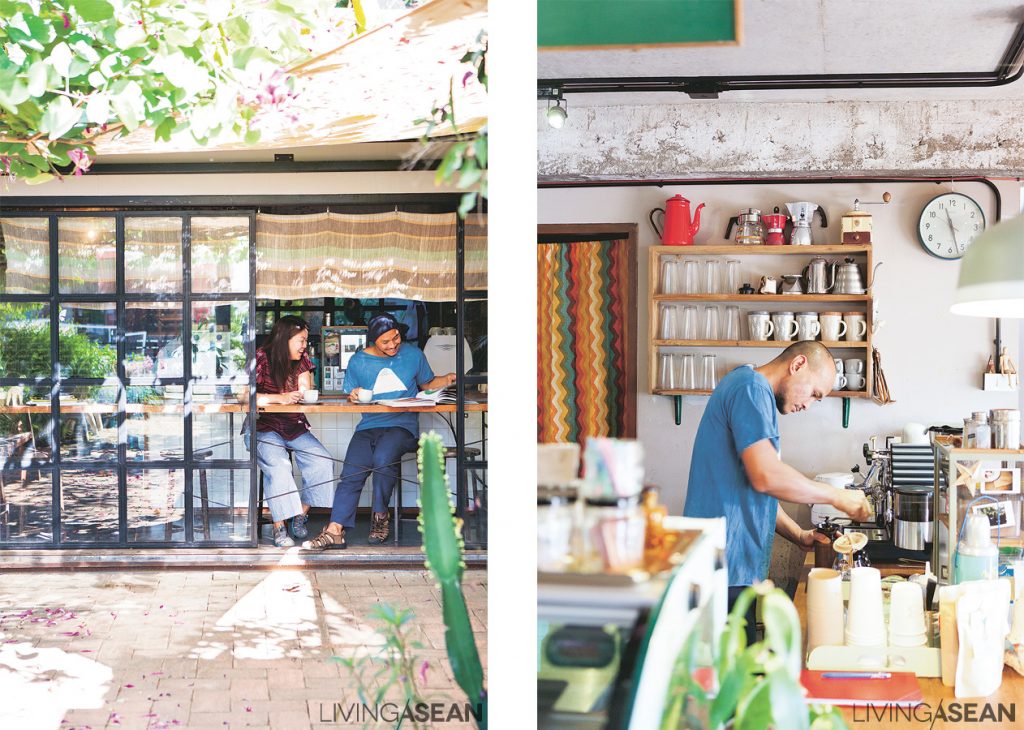

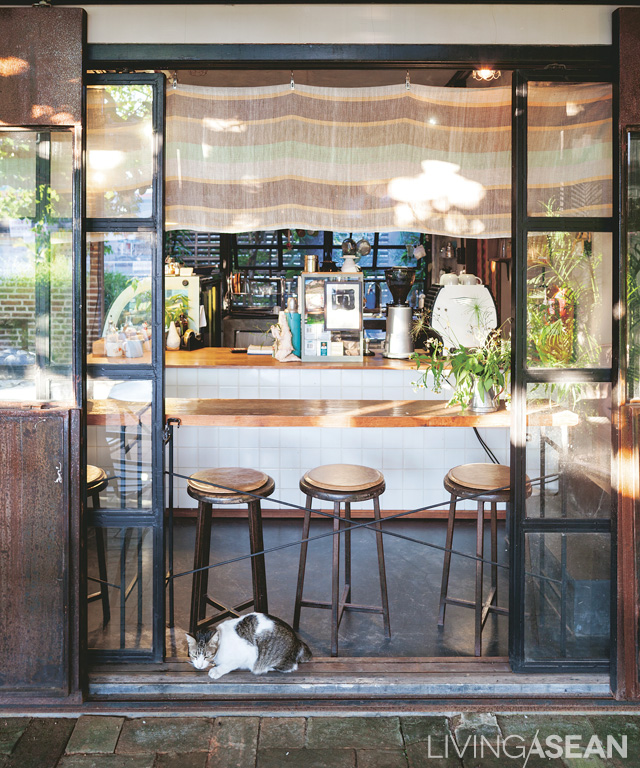
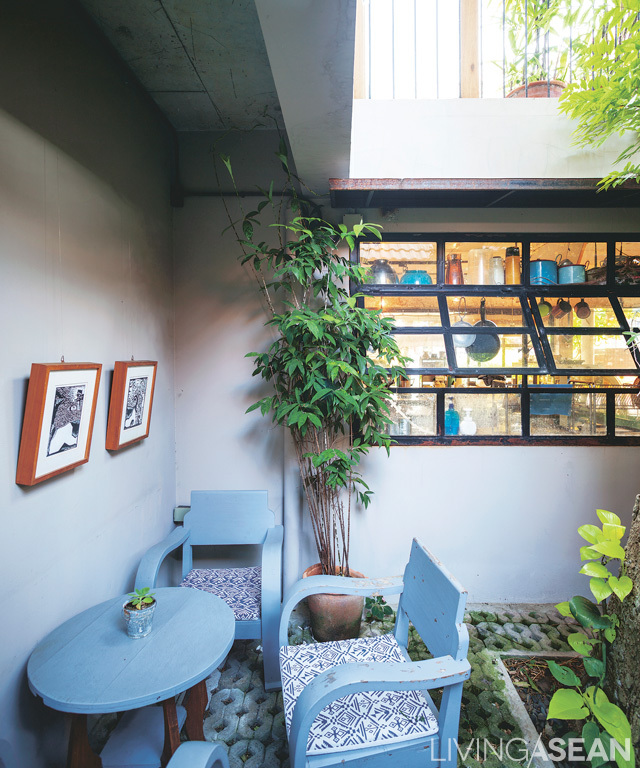
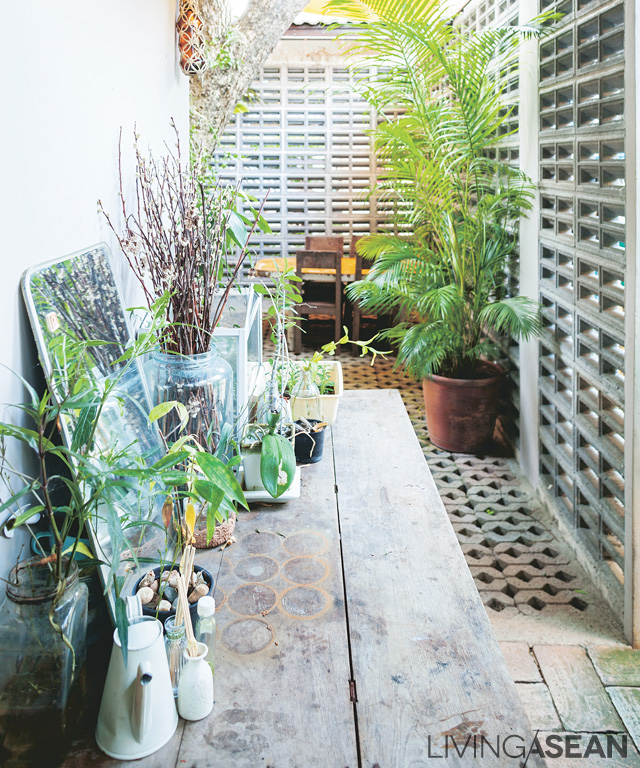
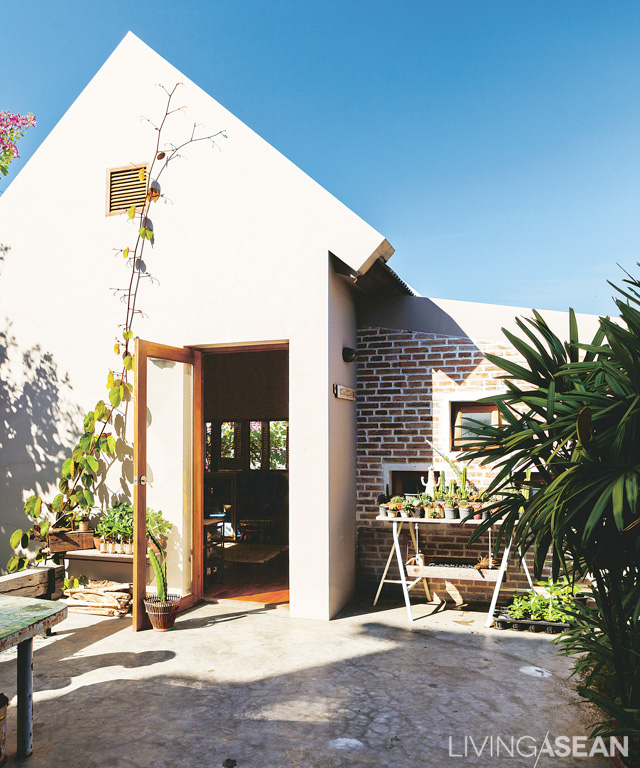

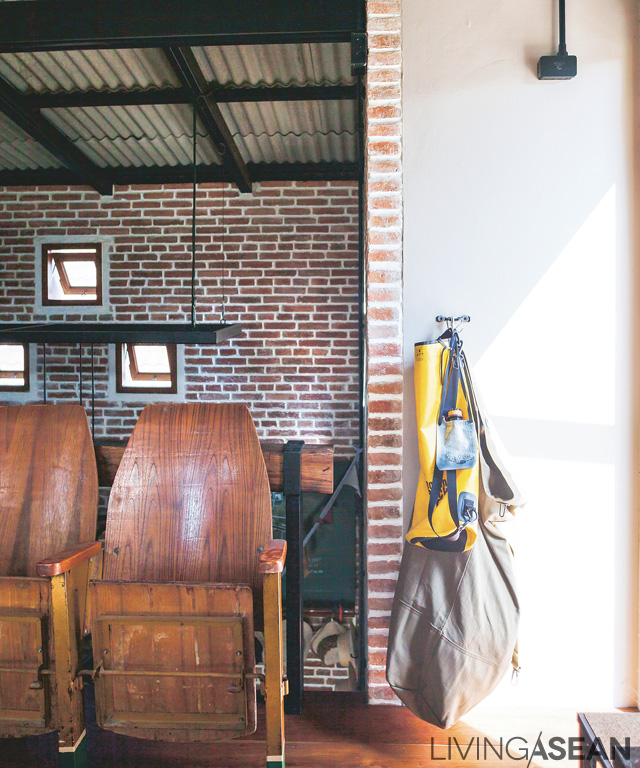
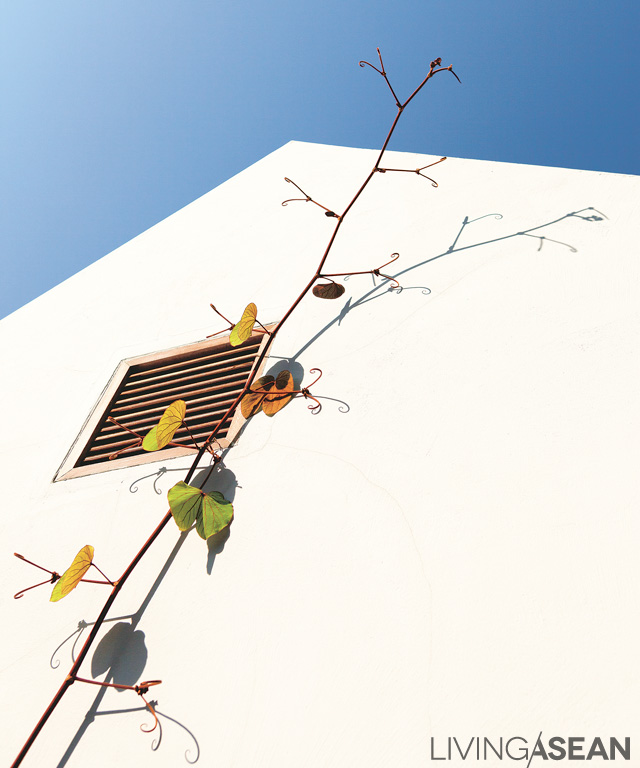

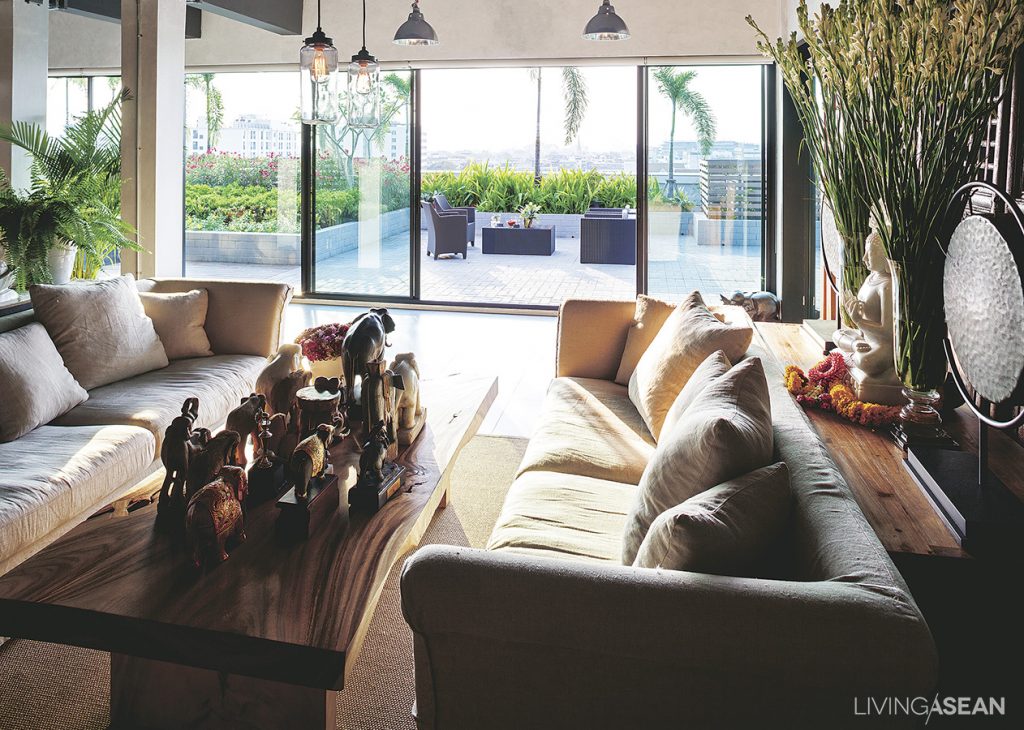
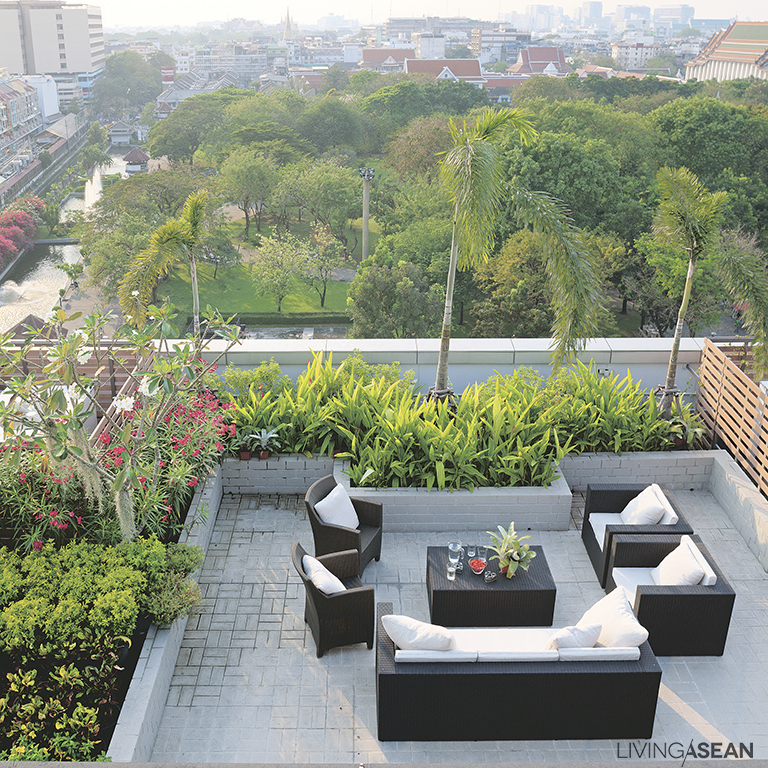
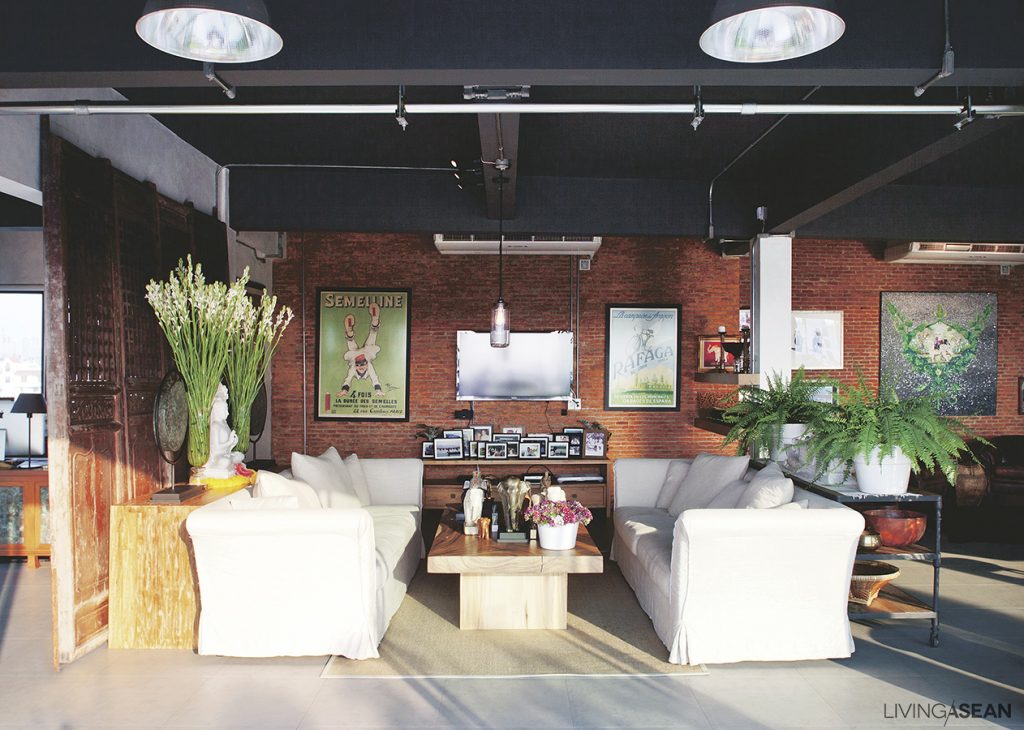
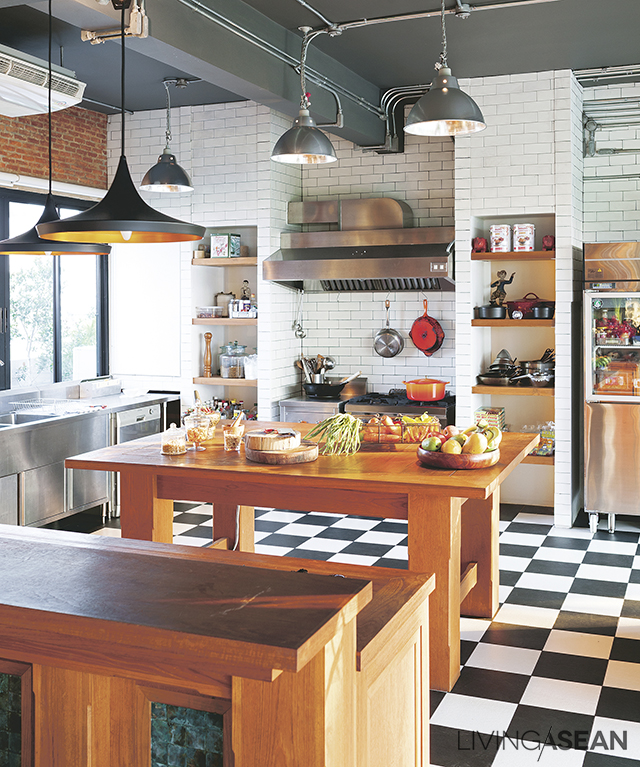
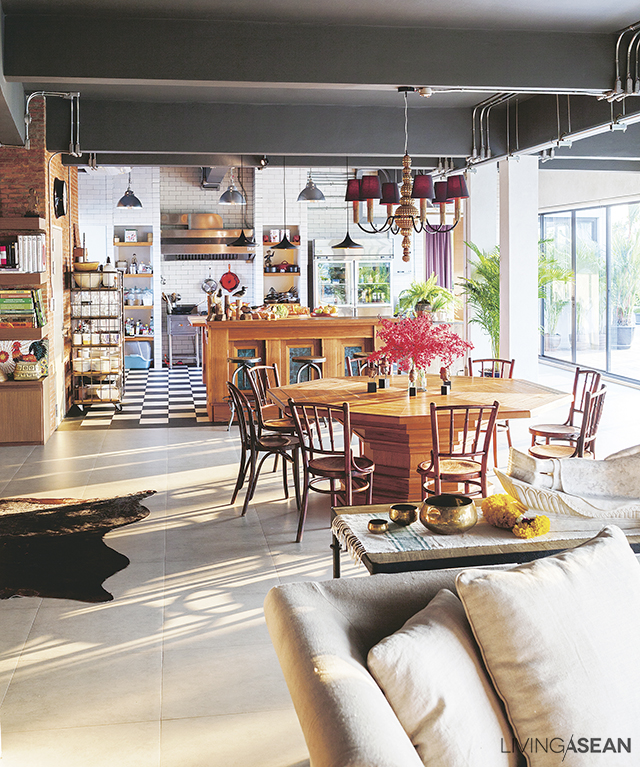
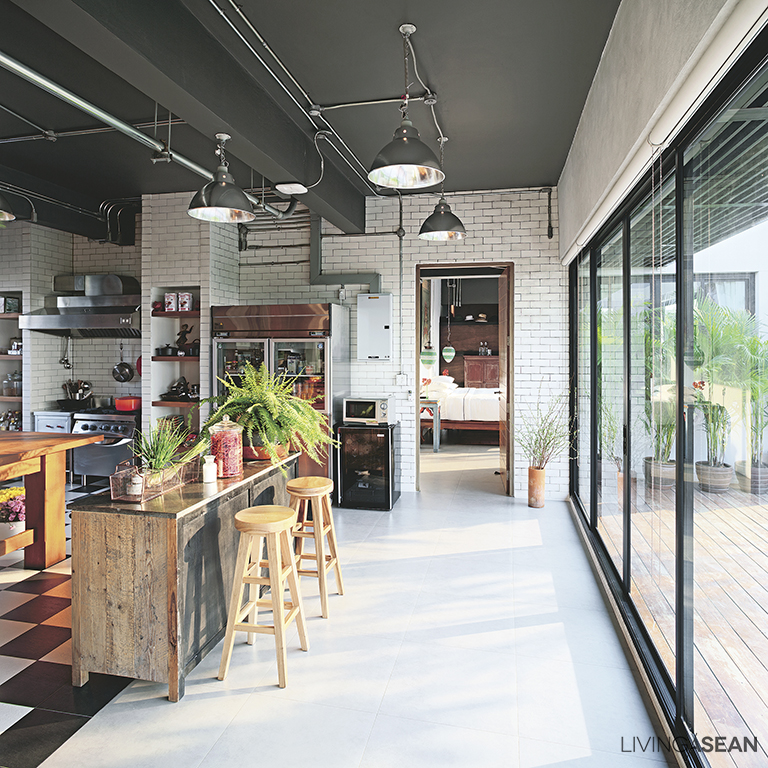
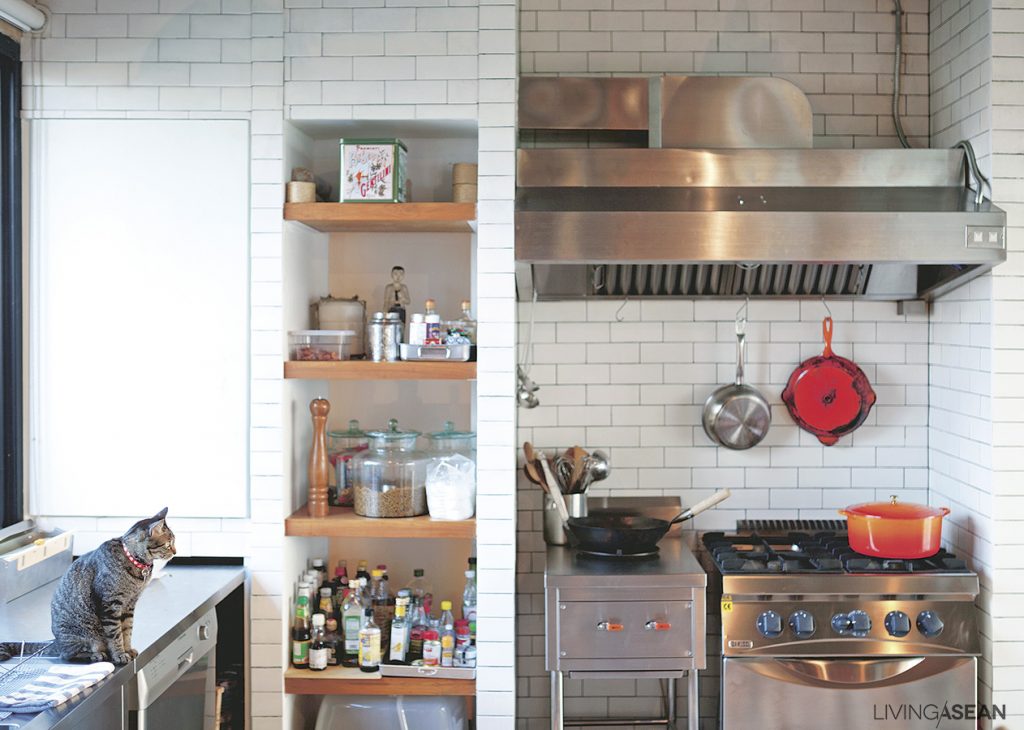
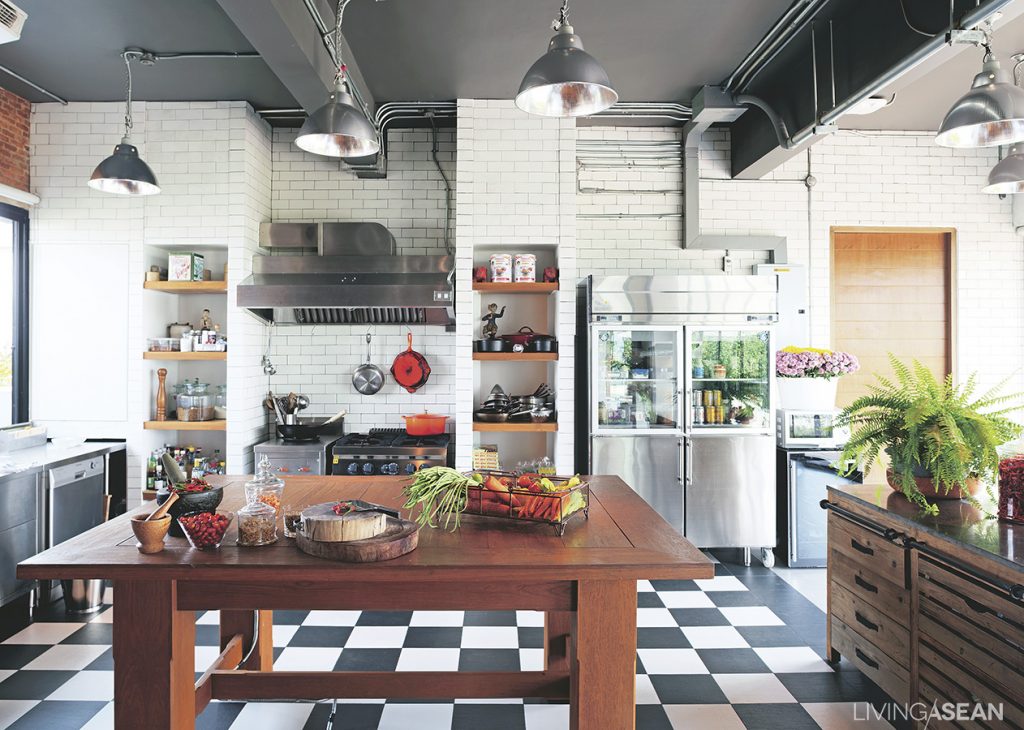
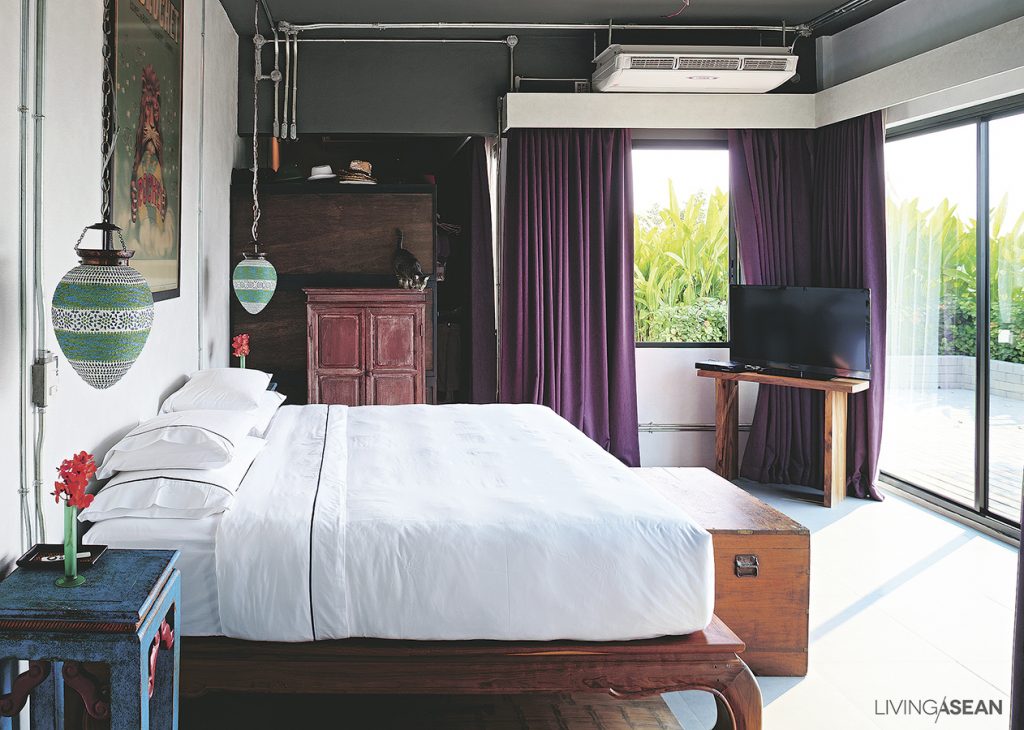

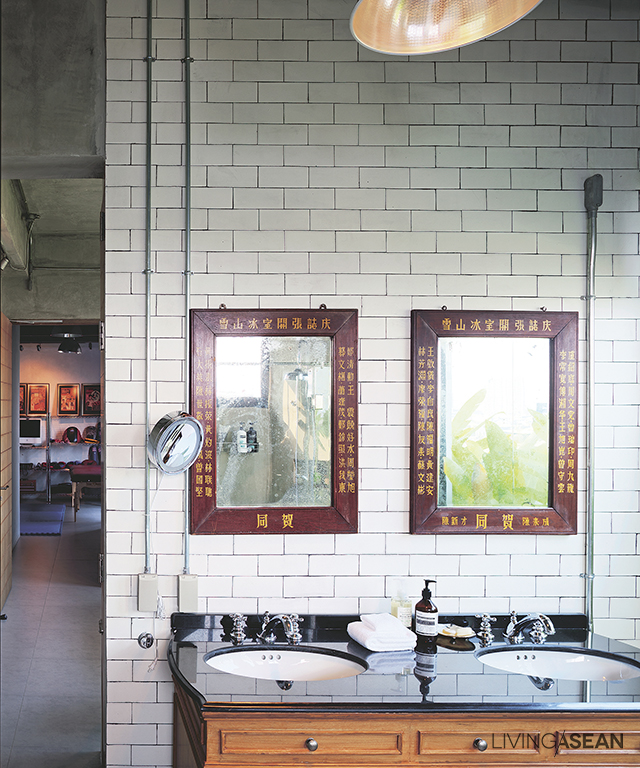
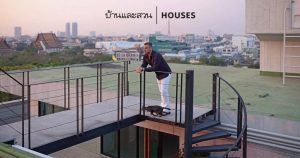
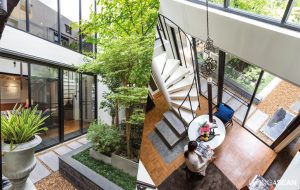
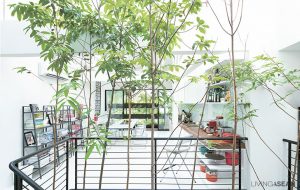
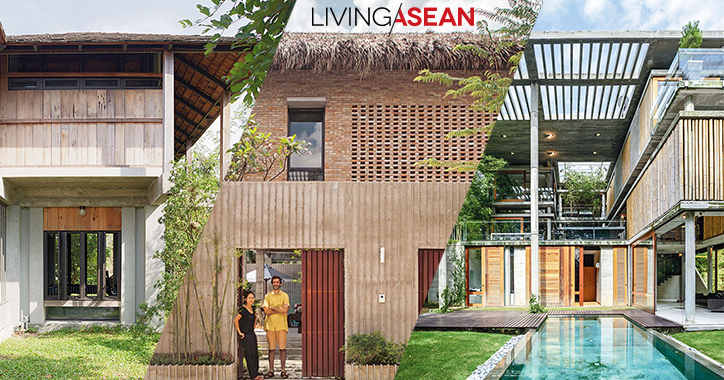
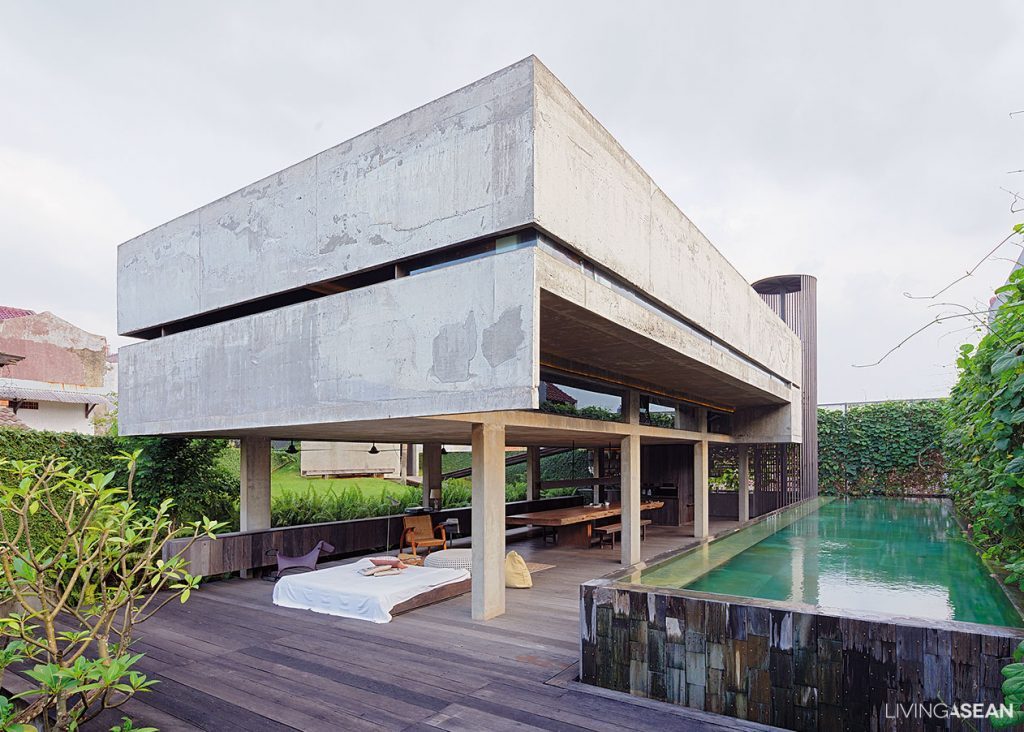

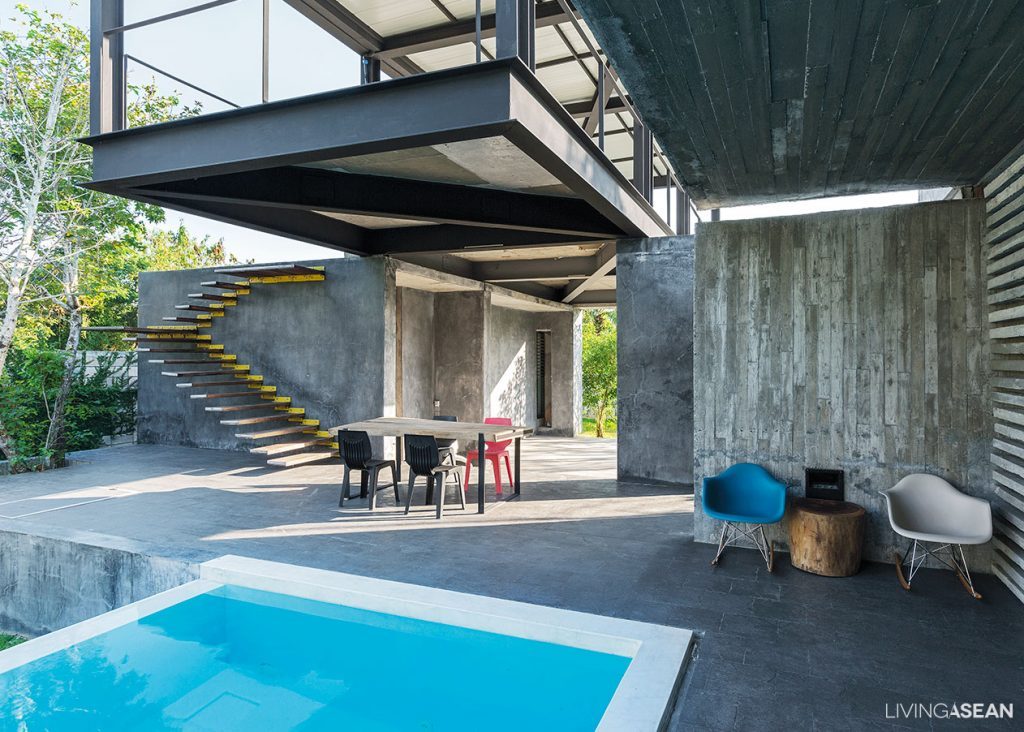
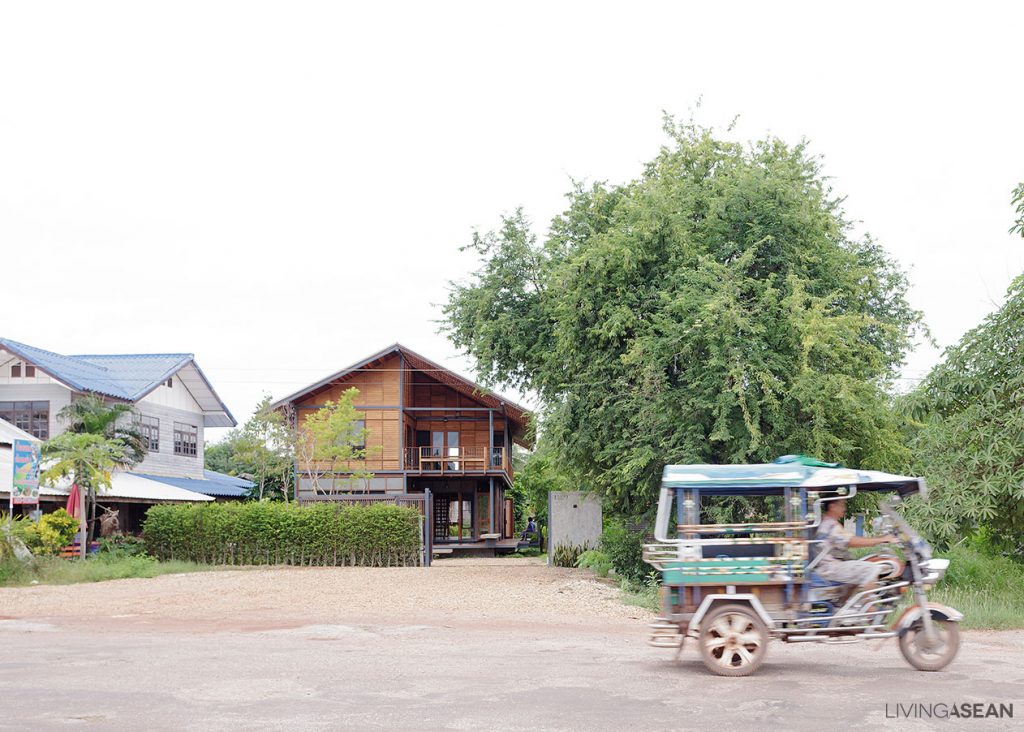
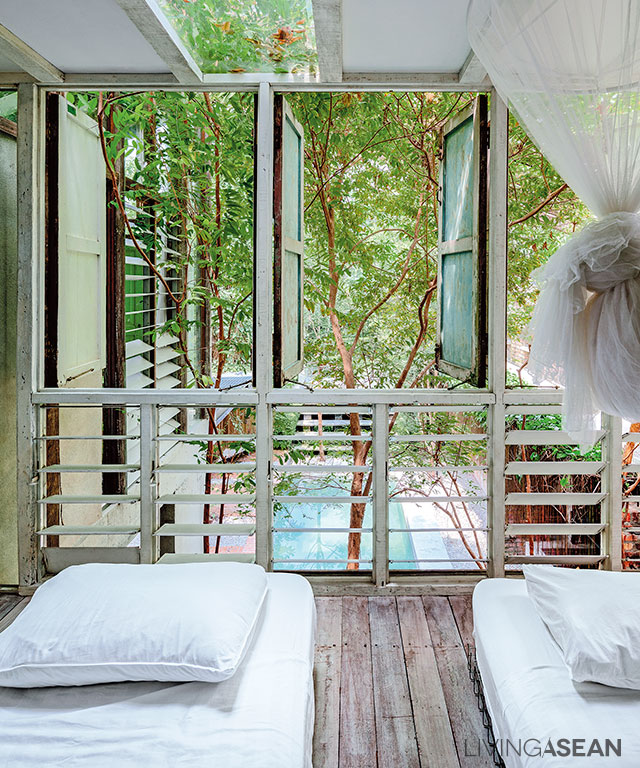

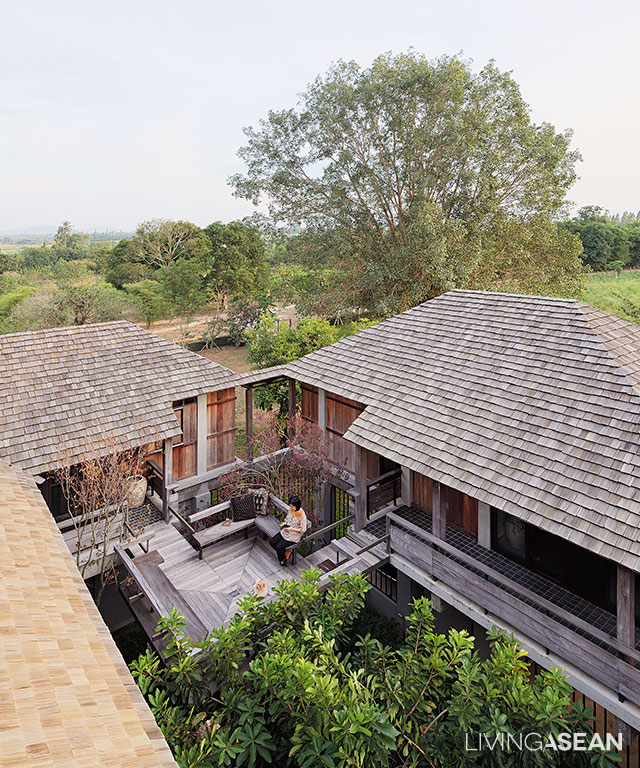

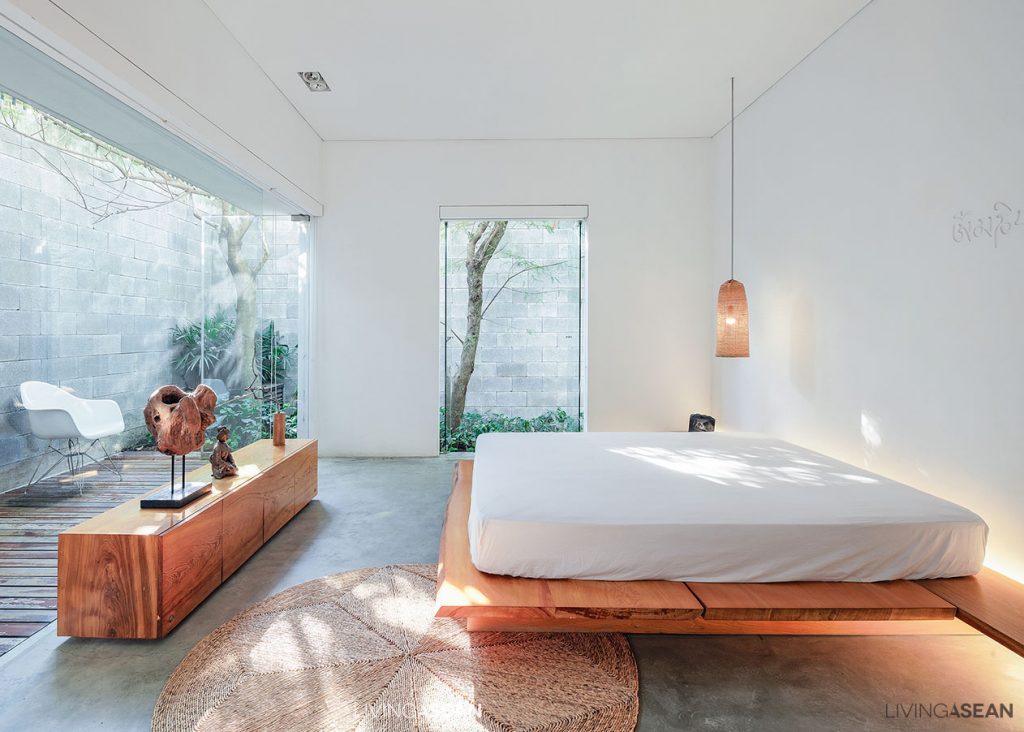
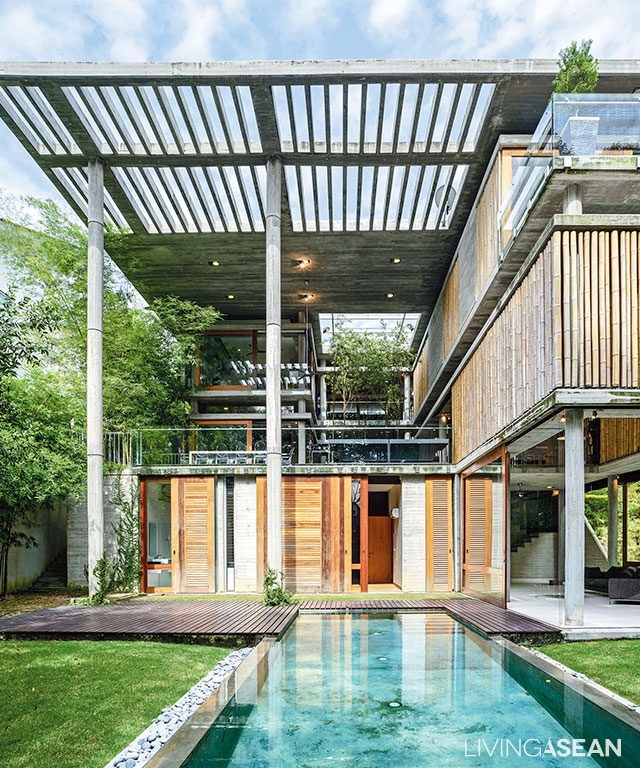
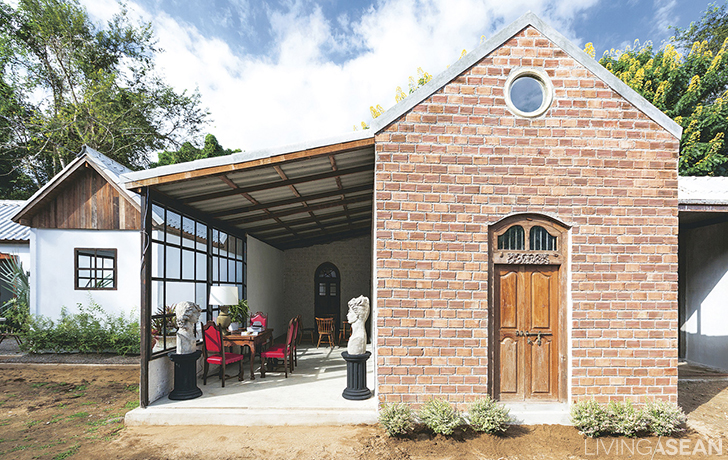
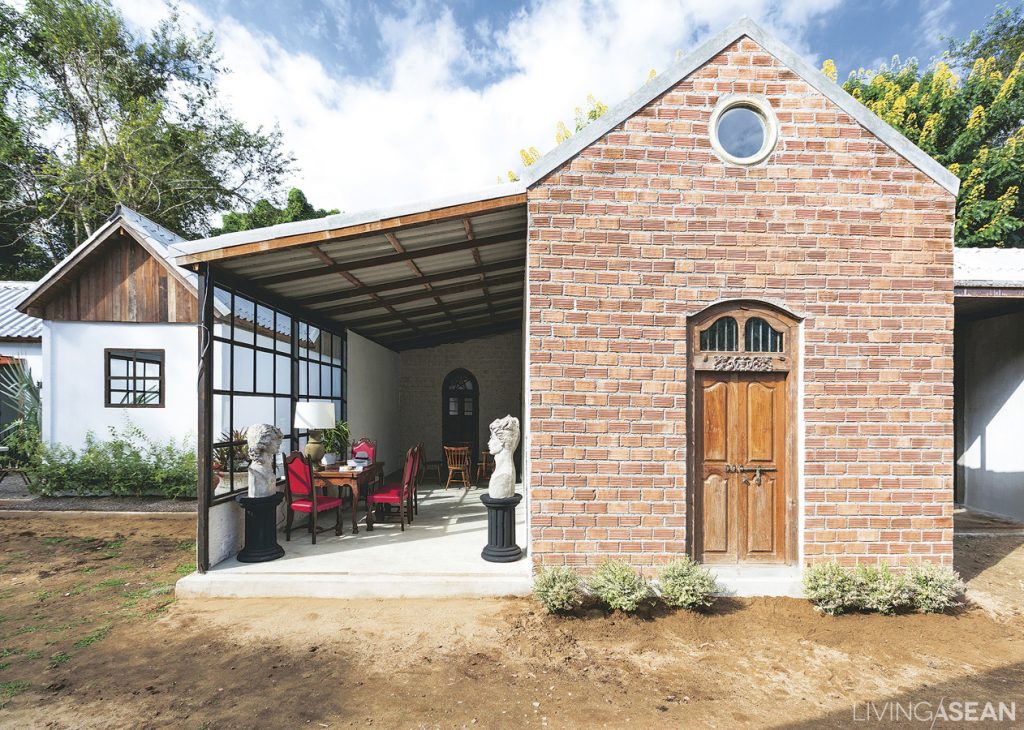
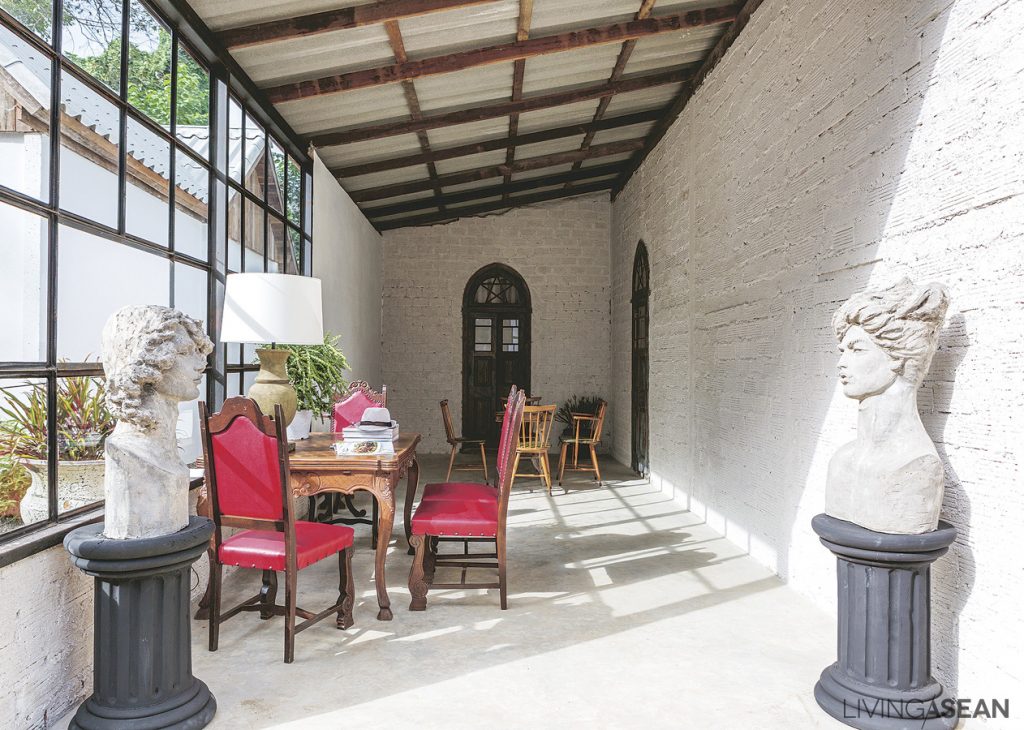
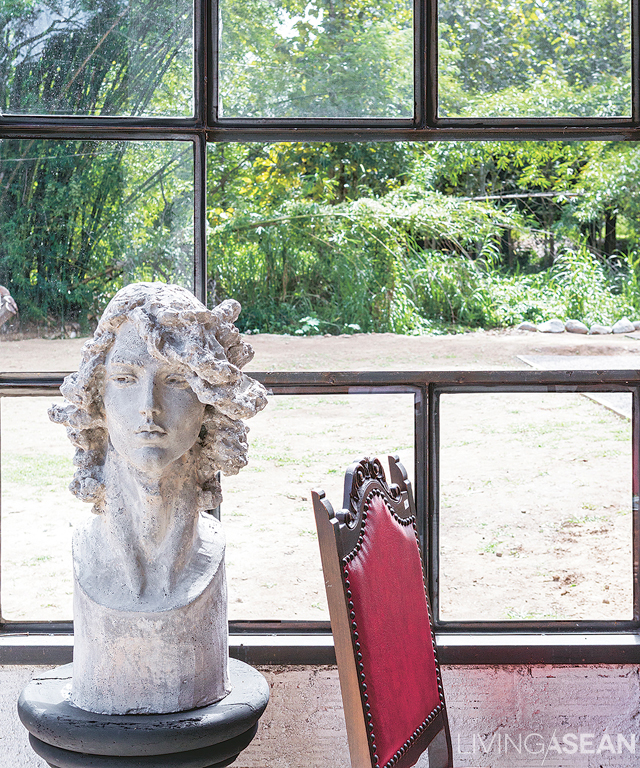
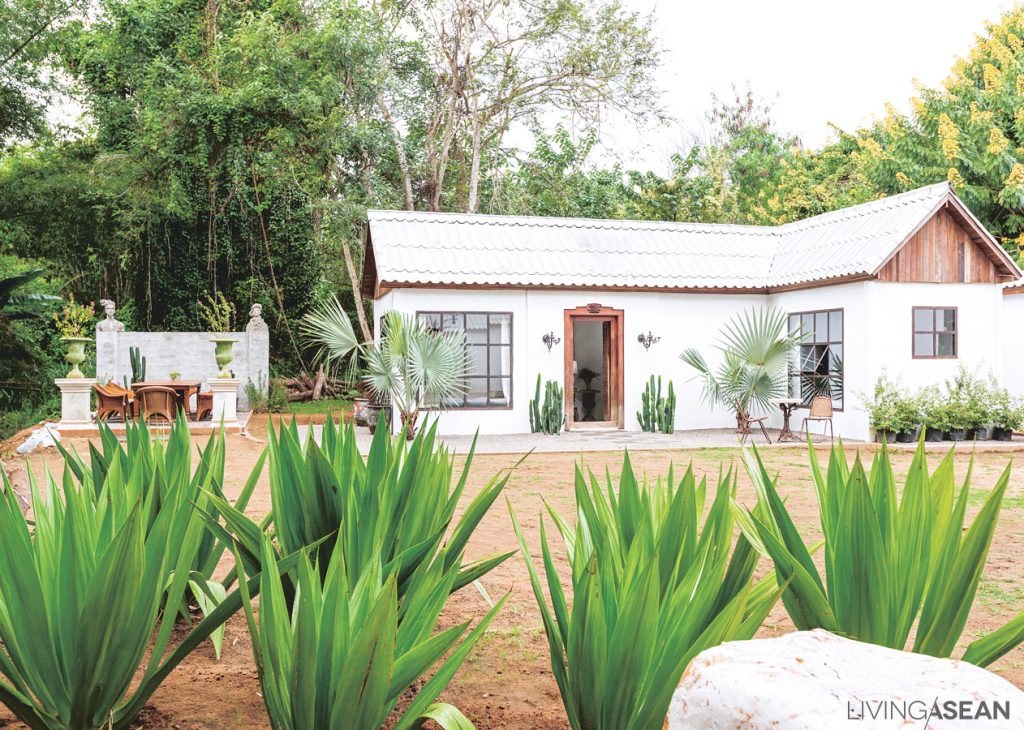
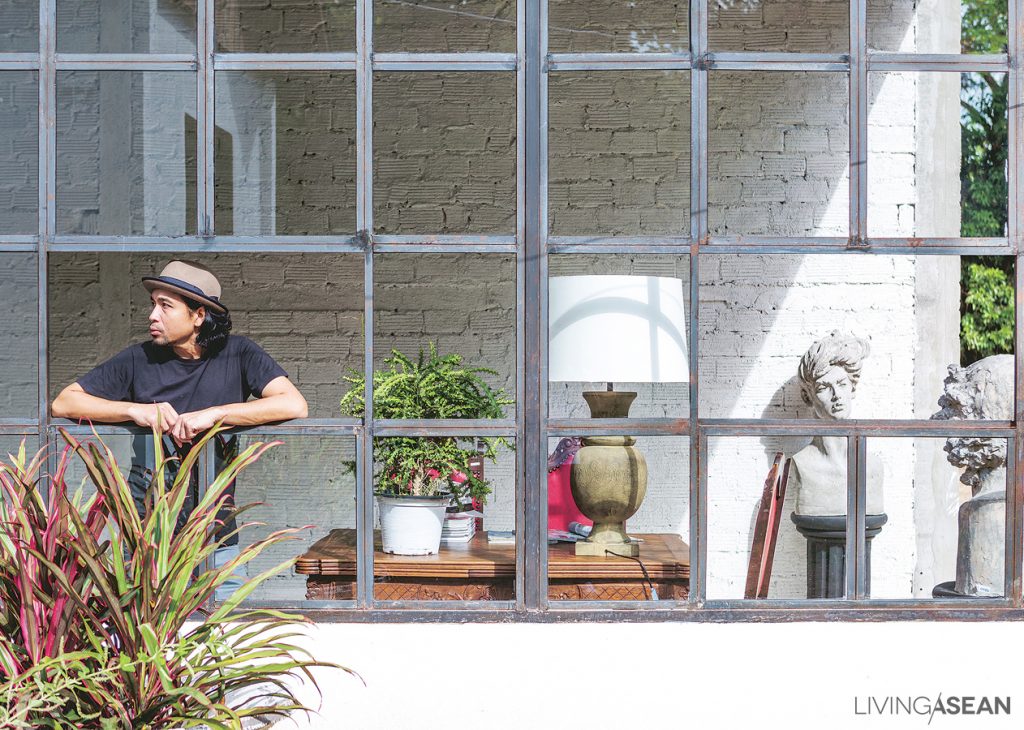
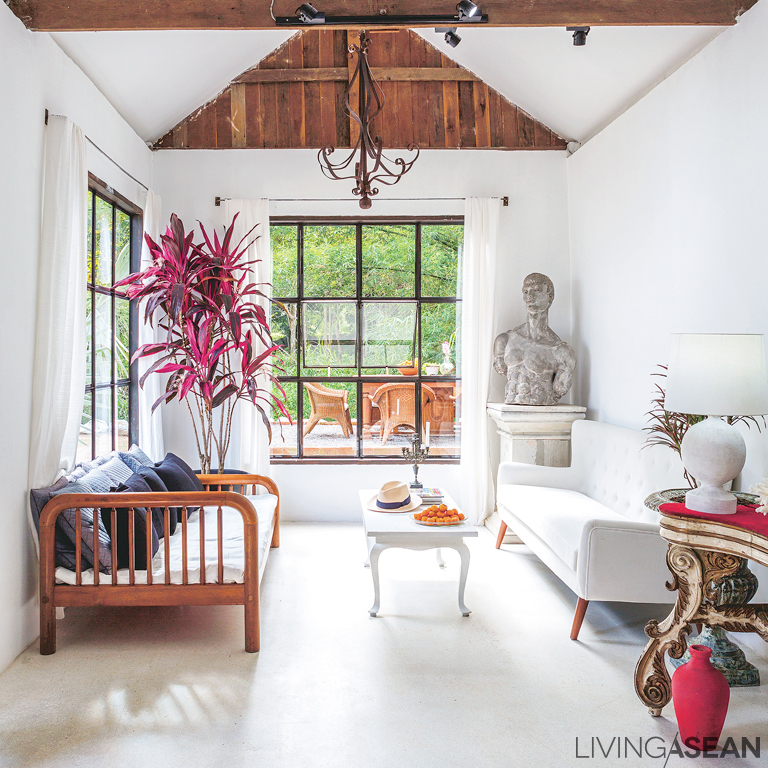
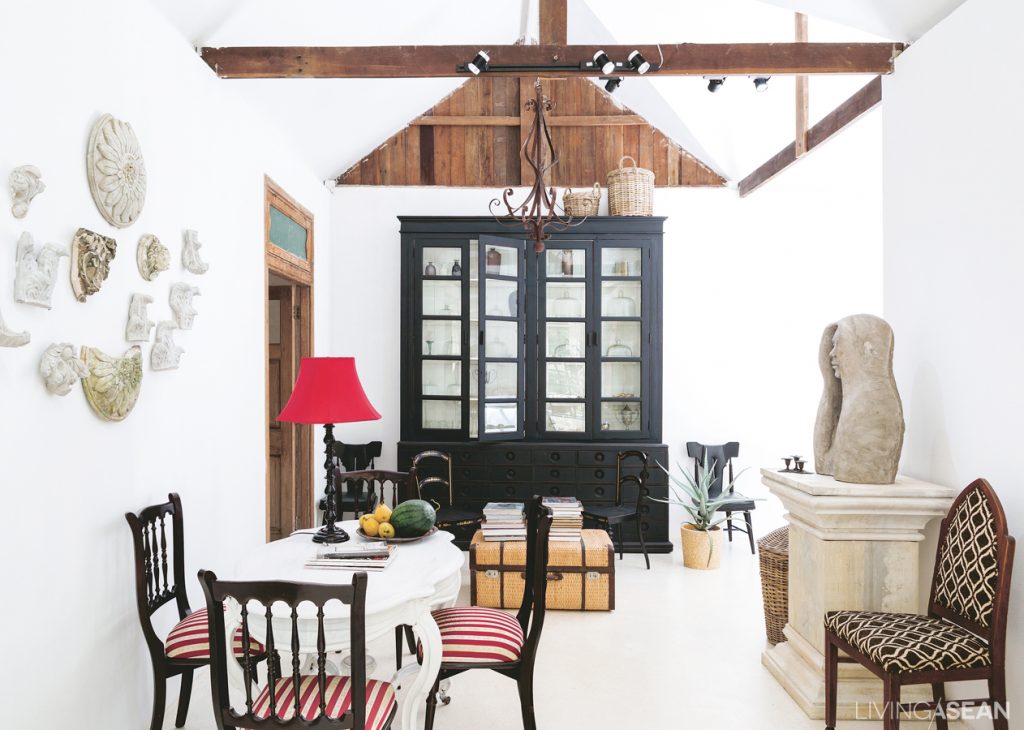
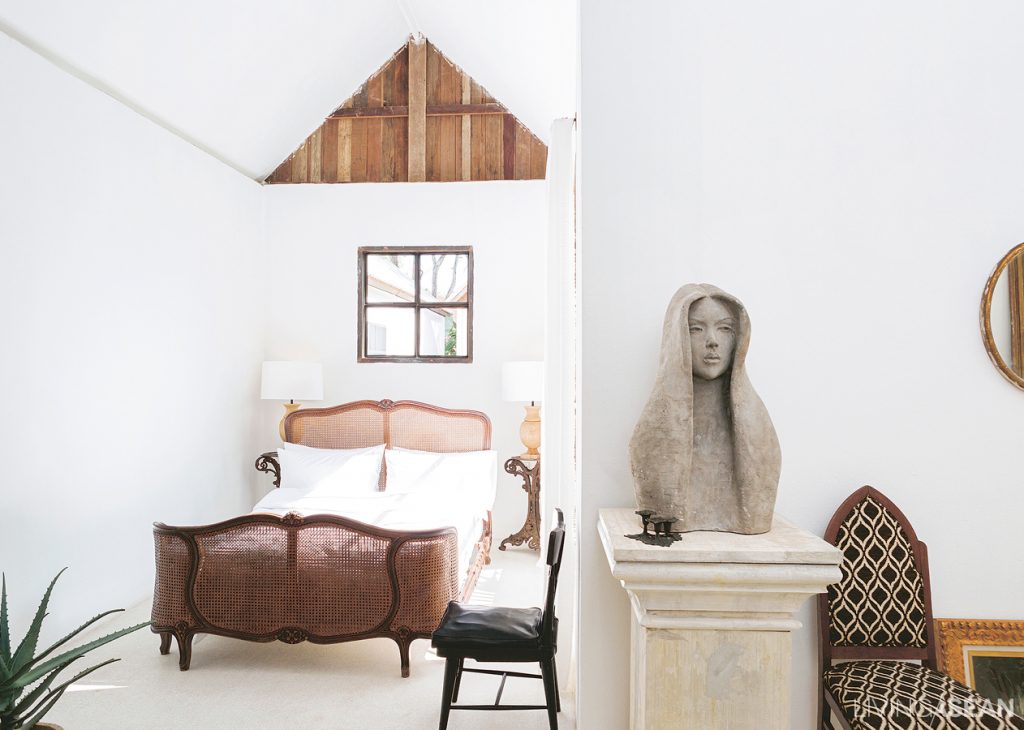

![[Left] The guest bedroom boasts the beauty of antique French furniture. / [Right] A sundeck with rattan furniture is designed for relaxation at the water’s edge. It is set on a pea gravel patio with retaining walls crafted of brickwork.](https://livingasean.com/wp-content/uploads/2016/11/010-3-1024x730.jpg)
